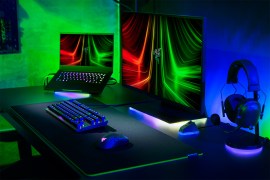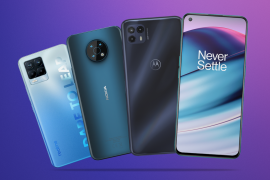Motorola Edge 50 Pro review: living on the edge
Mid-range specs meet Pantone-approved cameras
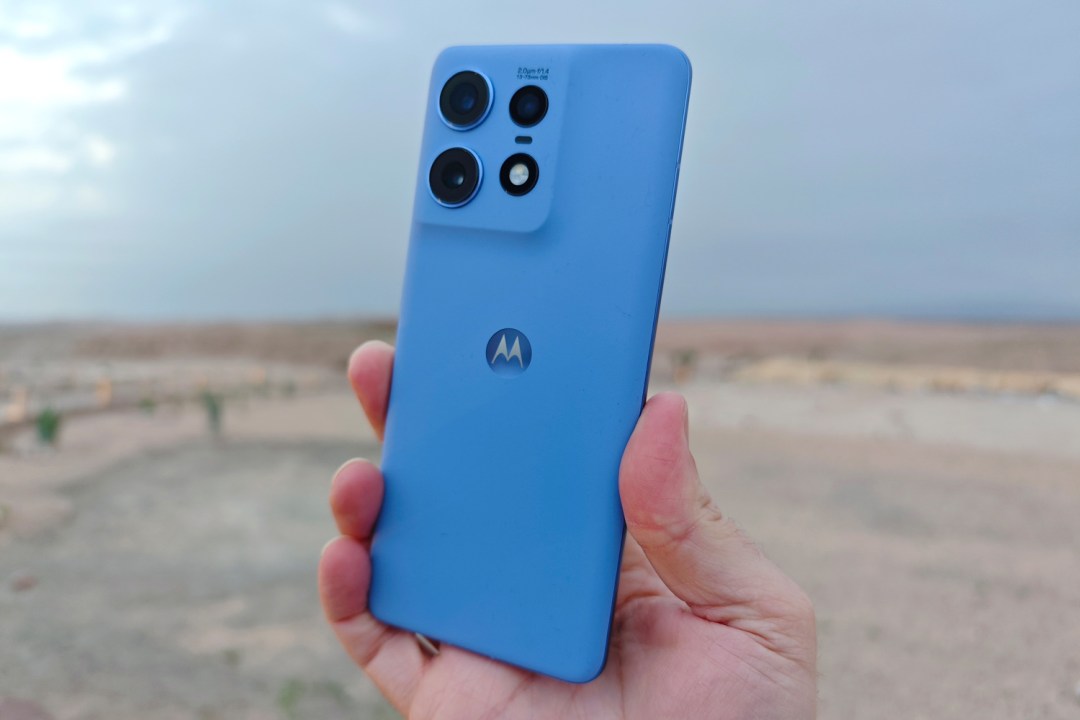
Stuff Verdict
A pretty and proficient mid-ranger, with rapid charging and a decent lead camera. But rivals have more personality than the Edge 50 Pro – and better secondary snappers.
Pros
- Suave styling in eye-catching colours
- Super-quick wired and wireless charging
- Curved-edge OLED display is delightful
Cons
- Image processing a step behind the best
- Camera app can be sluggish at times
- There are faster performers at this price
Introduction
Making sense of Motorola’s extensive phone lineup used to feel like a fool’s errand, with multiple Moto Gs and the same device getting different names depending on where in the world you buy it. This year’s higher-end efforts are a little clearer, with the Edge 50 Ultra taking top billing and the Edge 50 Fusion putting affordability first. The Motorola Edge 50 Pro falls in the middle to chase the best mid-range smartphone crown, leaving the Moto G range to compete for affordable glory and the Razr line fighting it out in the foldable space.
It has similar styling, gets a helping hand from Pantone on its display and camera colour processing, and has some of the fastest charging – both wired and wireless – you’ll find in its class. But the spec sheet feels a little dialled back compared to the previous gen effort, possibly to widen the gap between it and the Edge 50 Ultra.
Landing at £599/€699, it undercuts both the Google Pixel 8 and OnePlus 12R, but puts it in the firing line of the Nothing Phone 2. Can the Edge 50 Pro make an impression against such established mid-rangers?
How we test smartphones
Every phone reviewed on Stuff is used as our main device throughout the testing process. We use industry standard benchmarks and tests, as well as our own years of experience, to judge general performance, battery life, display, sound and camera image quality. Manufacturers have no visibility on reviews before they appear online, and we never accept payment to feature products.
Find out more about how we test and rate products.
Design & build: pretty in purple
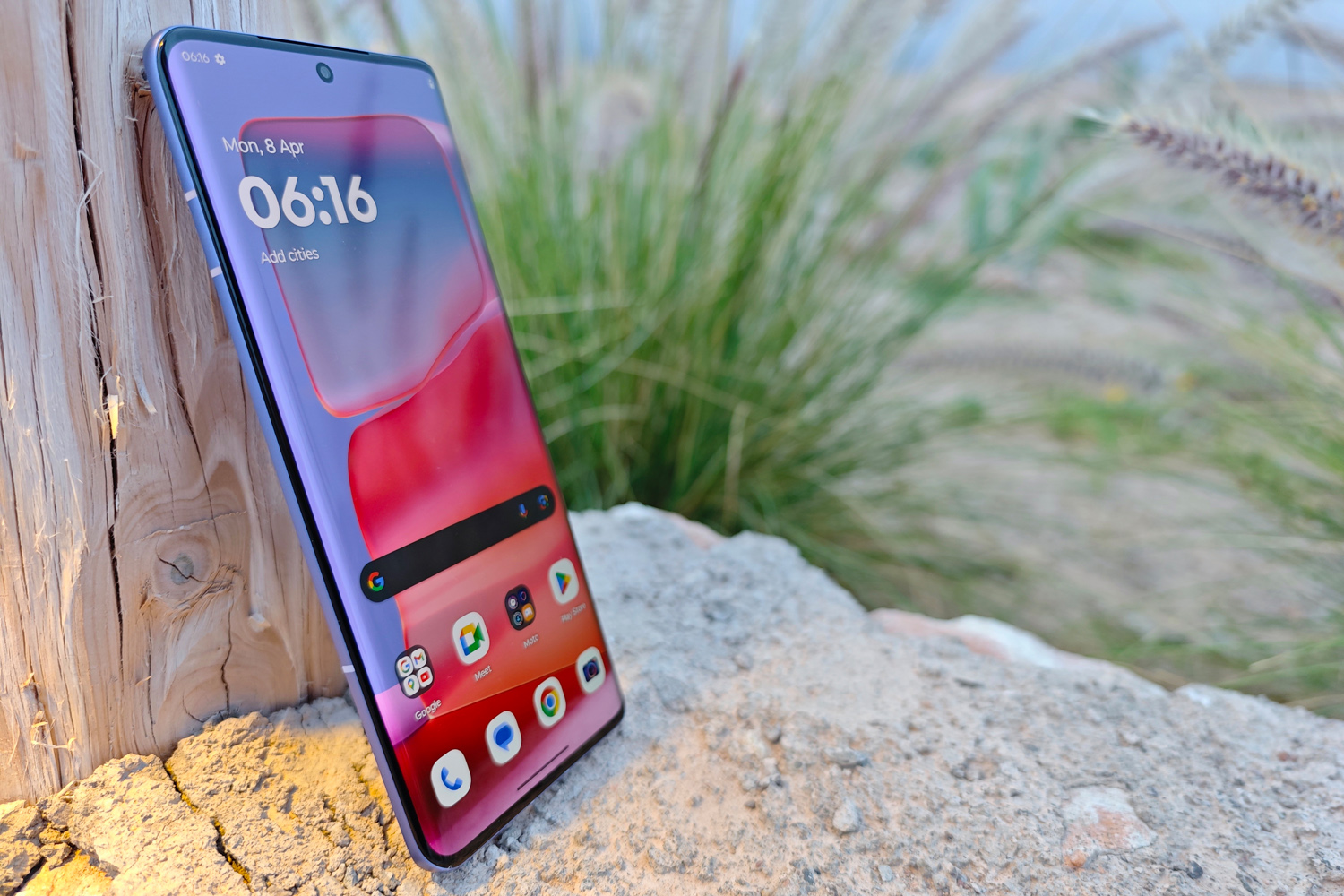
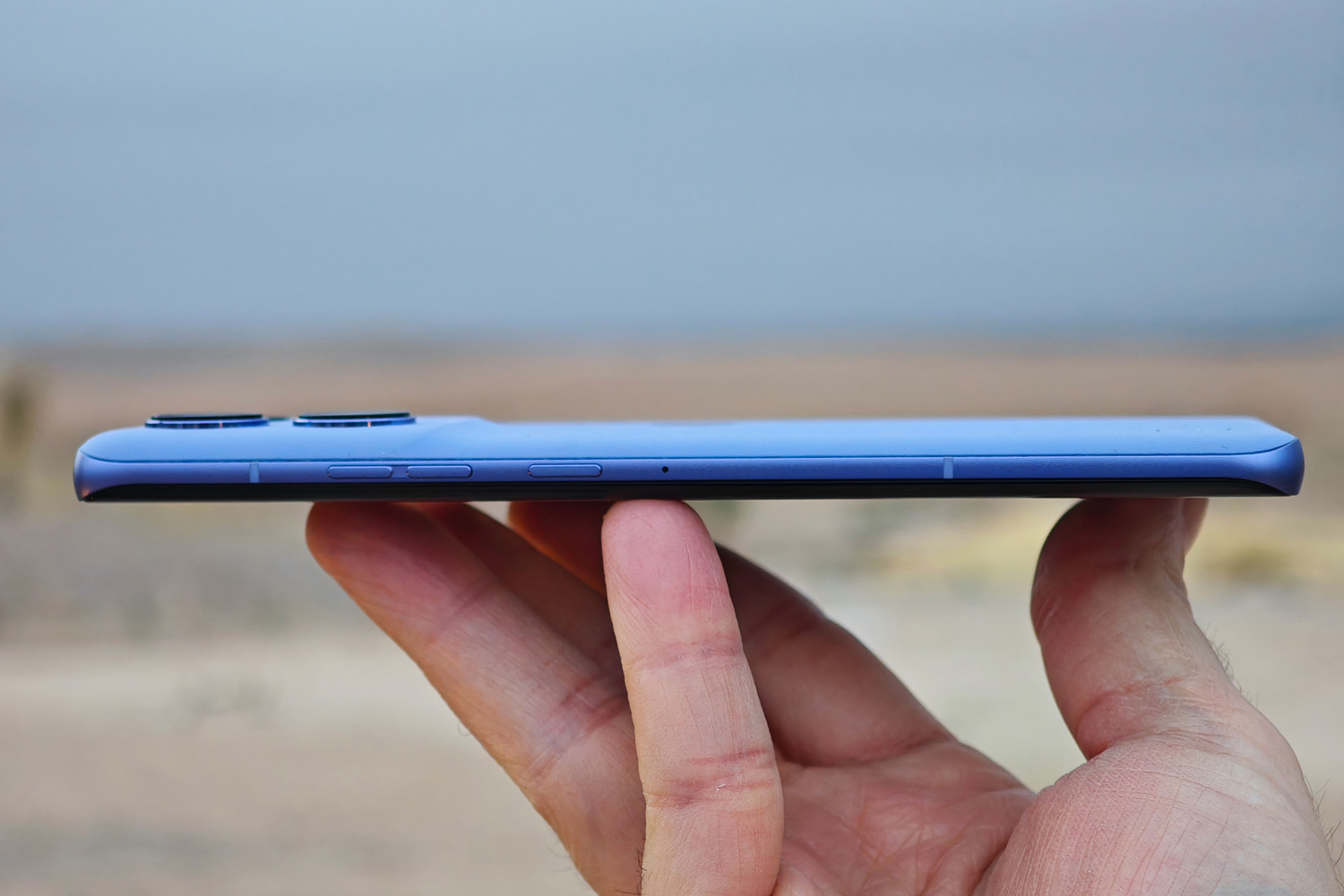
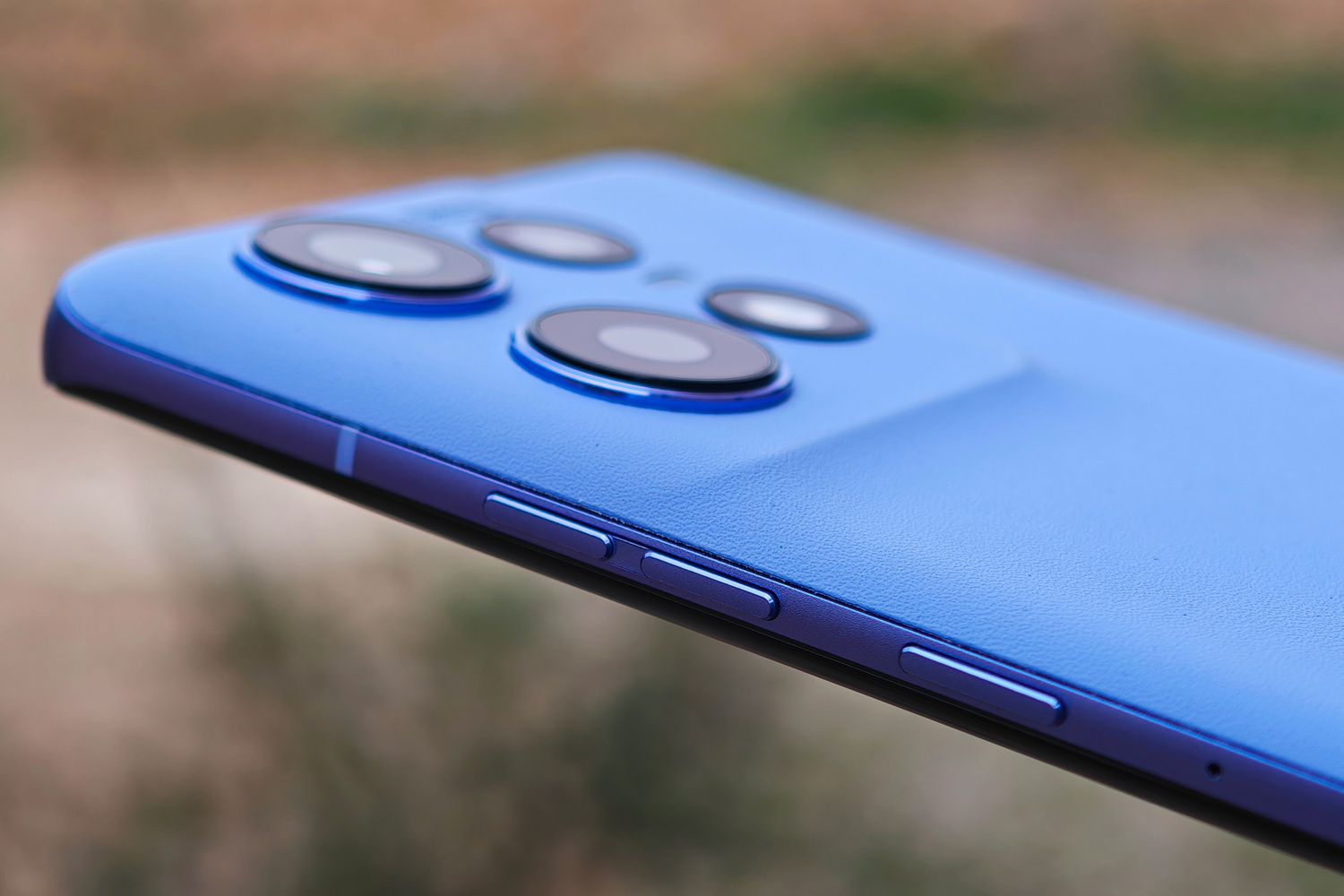
A year or two ago, the Edge series looked a bit generic – but now the rest of the phone world has gone back to flat glass and Motorola has teamed up with colour expert Pantone, the curved-screen Edge 50 Pro cuts a rather unique figure. At least, it does until you line it up with the Edge 50 Fusion and Edge 50 Ultra. There’s a clear family resemblance, with back panel colour and materials being the biggest differentiator.
Here you can opt for Black Beauty or Luxe Lavender vegan leather (my review unit was the latter), or a handmade acetate finish designed by Italian design house Mazzucchelli 1849. It has a similar pearl-like effect to the Huawei P60 Pro, and is quite the head-turner.
I liked how grippy the vegan leather felt in my hand, though was less impressed at how quickly it picked up dust and detritus from my pockets. A case might be wise if you don’t want to be constantly brushing it down. It’s built to last, at least, with IP68 dust and water resistance – a very welcome addition at mid-range money,
This is a svelte phone at just 8.2mm (ignoring the subtly raised camera module), and at 186g is refreshingly light given the 6.7in screen size. That’s partly down to the curved screen and rear panel, which slope cleanly into the metal central frame. It makes this a very comfortable phone to hold, and I had no issues with the curved display creating distracting light reflections. The under-display fingerprint sensor was easy to reach for one-handed unlocking, and proved accurate throughout my testing.
Screen & sound: round we go again
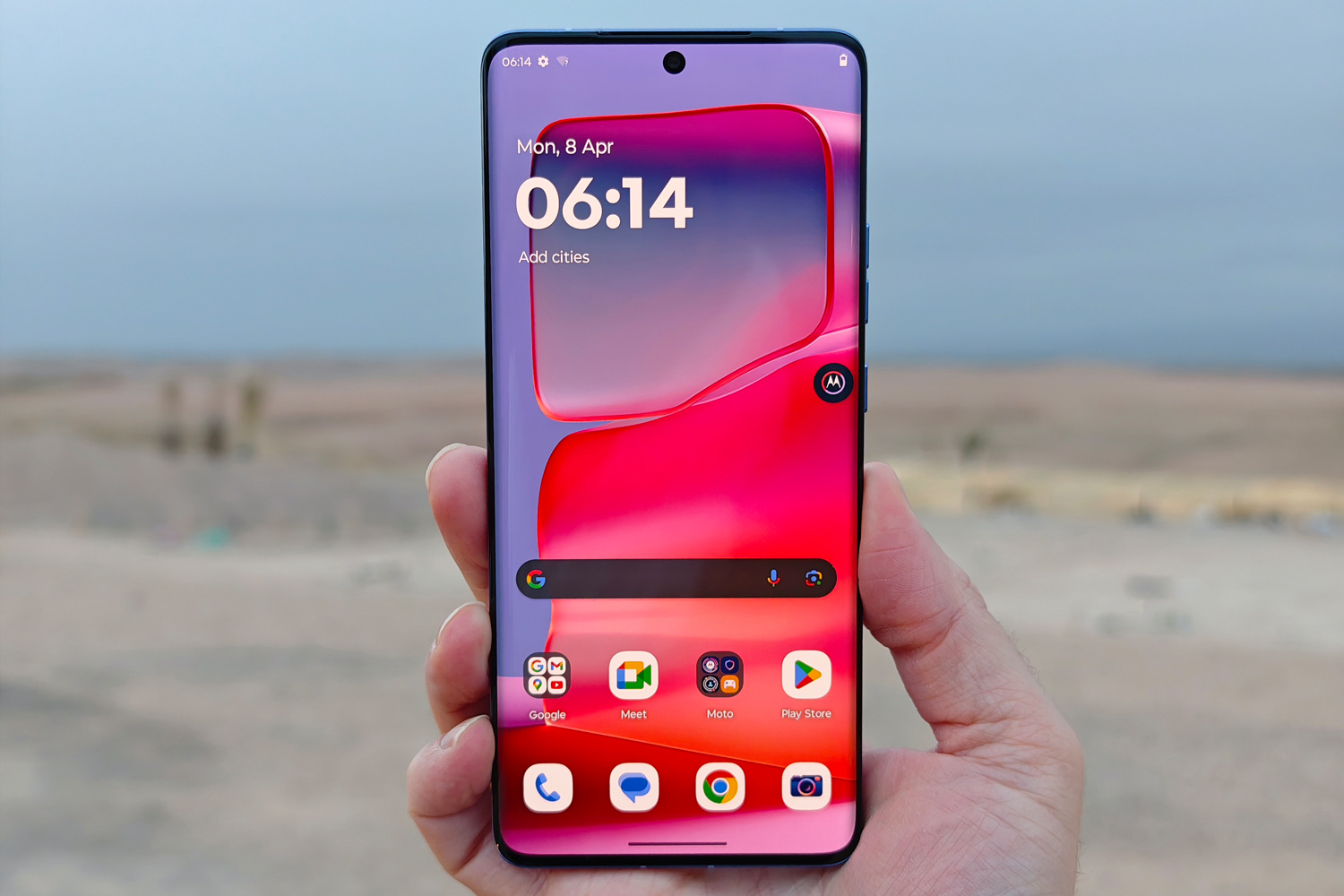
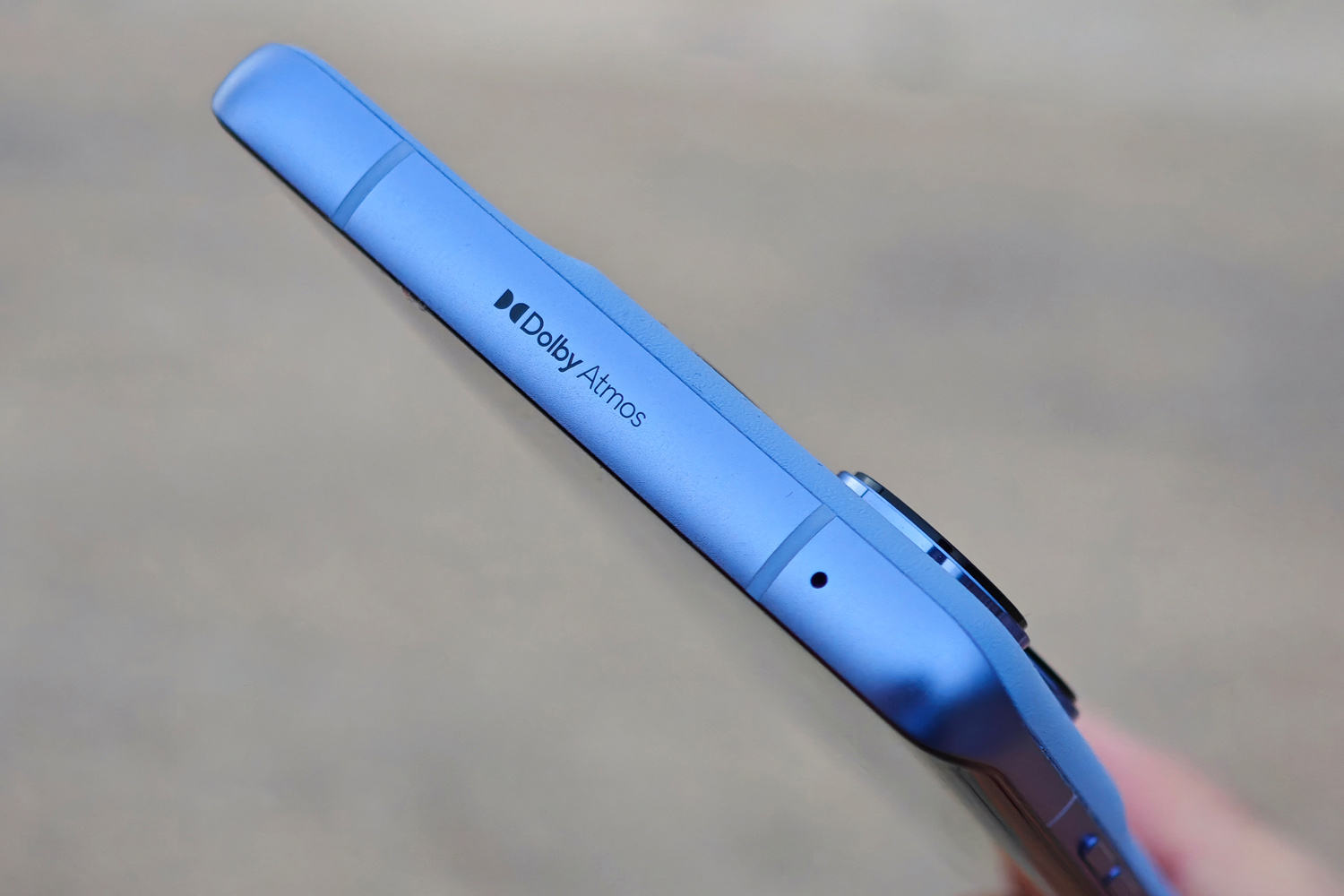
On paper, the Edge 50 Pro shares its 6.7in pOLED panel with the pricier Edge 50 Ultra. Both have a 2712×1220 resolution, both curve neatly into the frame at the left and right sides – which is sure to divide opinion when rivals have since gone back to flat glass – and both have a speedy 144Hz refresh rate.
The outlier is brightness; while the Edge 50 Ultra officially tops out at a peak 2500 nits, the Edge 50 Pro manages 2000. That’s only when showing HDR video, mind, and only for a small portion of the screen. Most of the time expect them to be very similar, and easily bright enough to see outdoors in bright sunshine. I had no trouble using the Pro in a sunny Marrakech.
It looked perfectly sharp and saturated from arms’ length, with the sort of contrast and deep, inky blacks I take for granted from OLED displays. While Moto makes a big deal out of Pantone’s colour validation, it wasn’t actually enabled out of the box; the Edge 50 Pro defaulted to Vivid colour, which was more in line with Samsung’s vibrant hues. Switching to the Natural colour preset definitely dialled things back and became more true-to-life. That said, I don’t think it made for a massive improvement over rival handsets.
Cranking the volume on the downfiring speaker and front-facing earpiece revealed a well-rounded sound given the phone’s relatively slim stature, with just the slightest hint of bass presence. It gets plenty loud enough for YouTube catchups or podcast listening, though could be a little shrill at the high-end when playing music at the very top of the volume range. That puts it on par with most rivals at this price.
Cameras: triple tastic
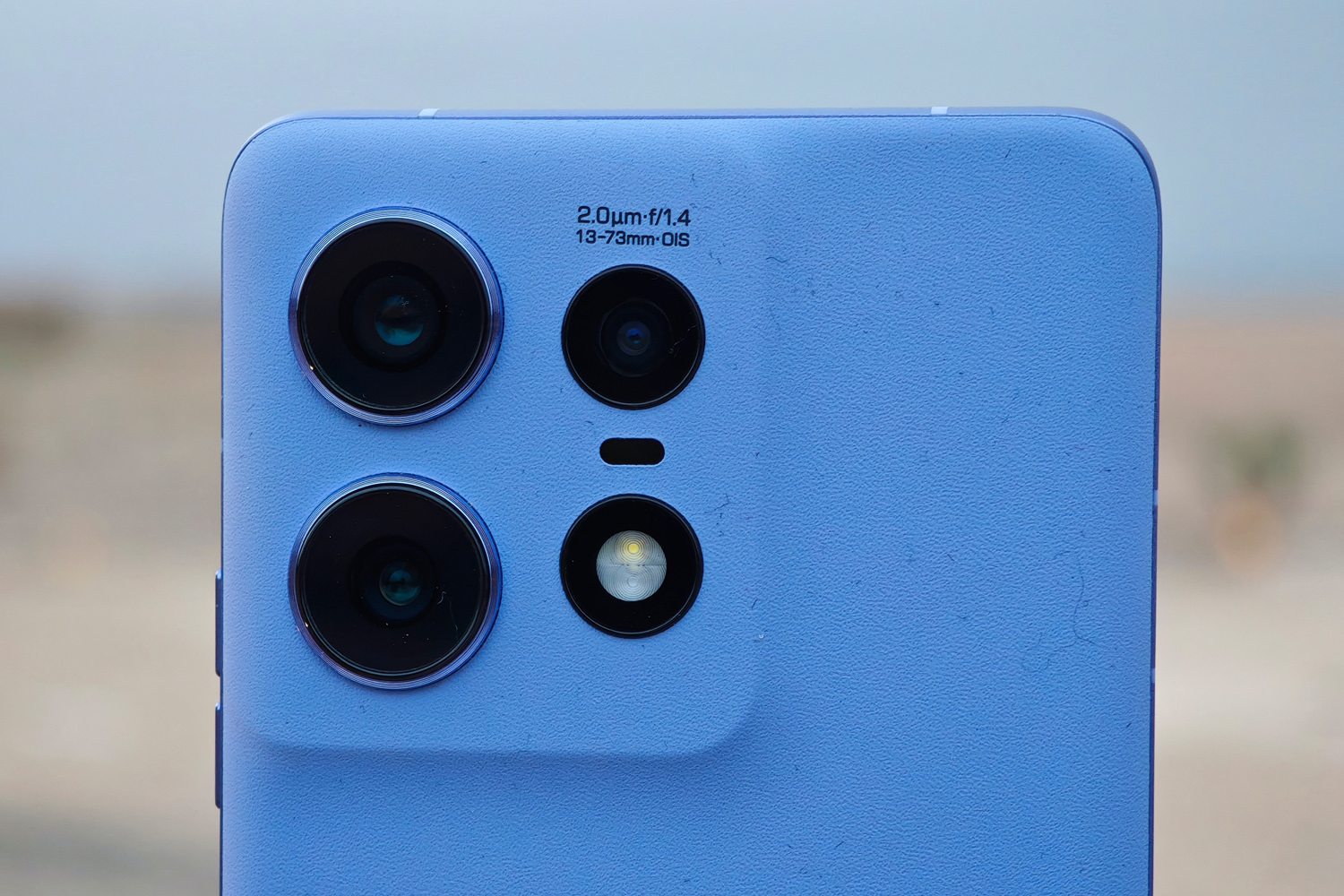
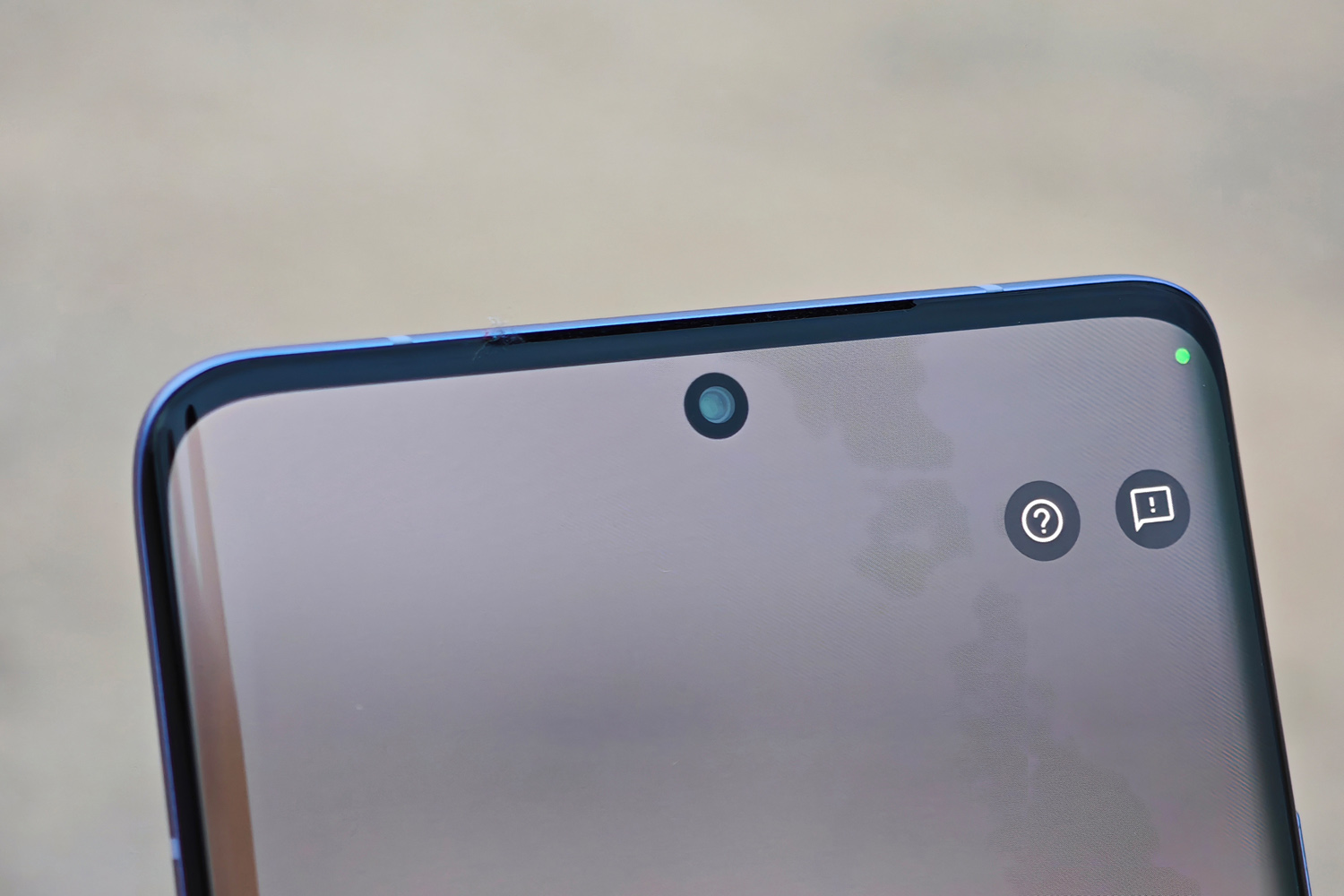
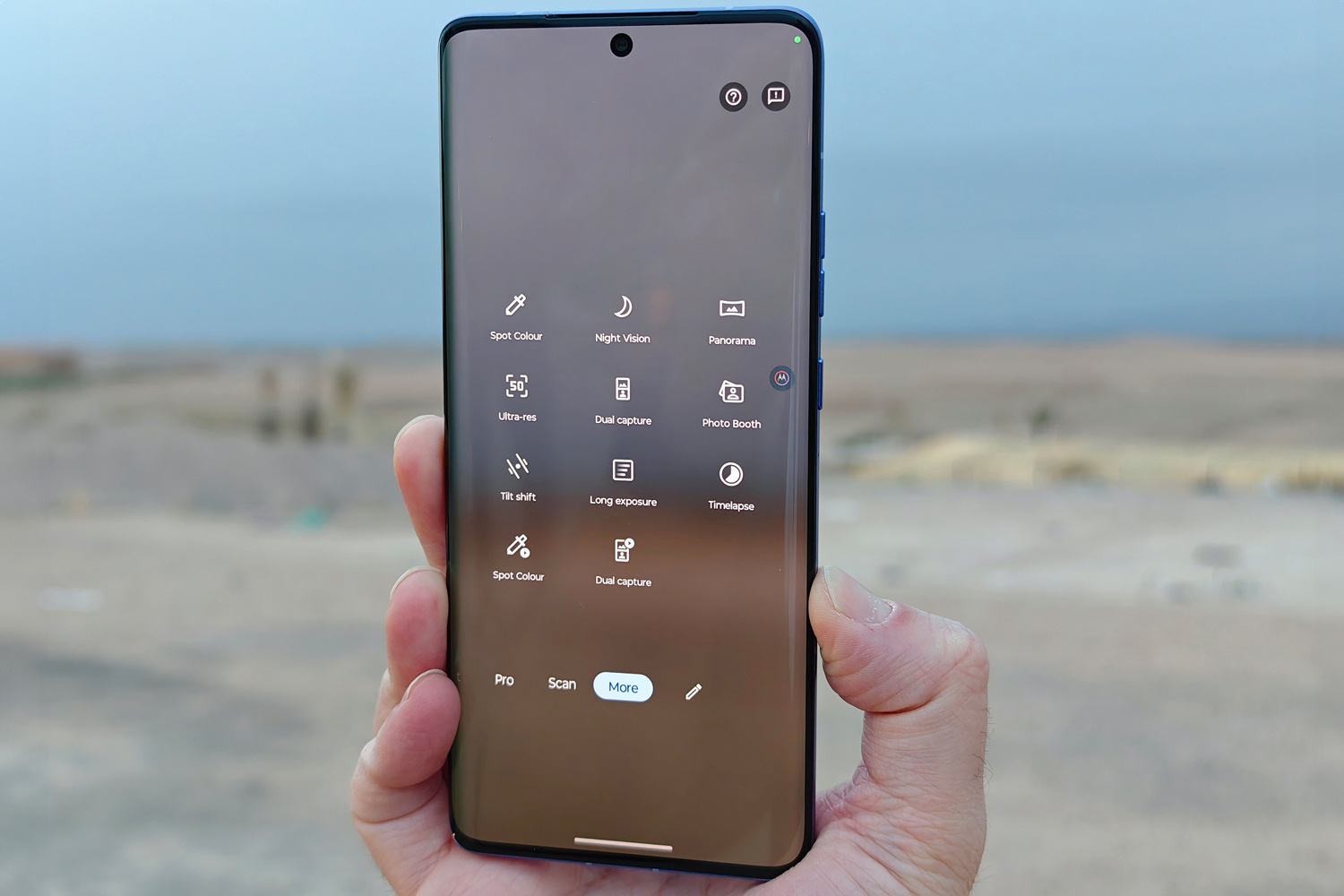
It may be a mid-range mobile, but Motorola hasn’t skimped on the Edge 50 Pro’s camera hardware. With a 50MP main snapper, 13MP ultrawide and 10MP telephoto good for 3x optical zoom, it goes beat-to-beat with the pricier Samsung Galaxy S24. It even goes one better up front, with the punch-hole selfie camera getting a 50MP pixel count.
The lead lens has an especially wide f/1.4 aperture, and gets optical image stabilisation to help with low-light shooting. The telephoto gets OIS too, while the ultrawide has close-range autofocus to let it double as a macro camera. All four cameras have been approved by Pantone for colour reproduction, which should mean accurate skin tones and true-to-life landscapes.
Overall image quality is decent for the money, with plenty of detail on display from the main camera. It’s a largely good judge of exposure in daylight, and has plenty of dynamic range. Oversharpening, something of a weakness on previous Motorola efforts, remains in play here, but slightly less so.
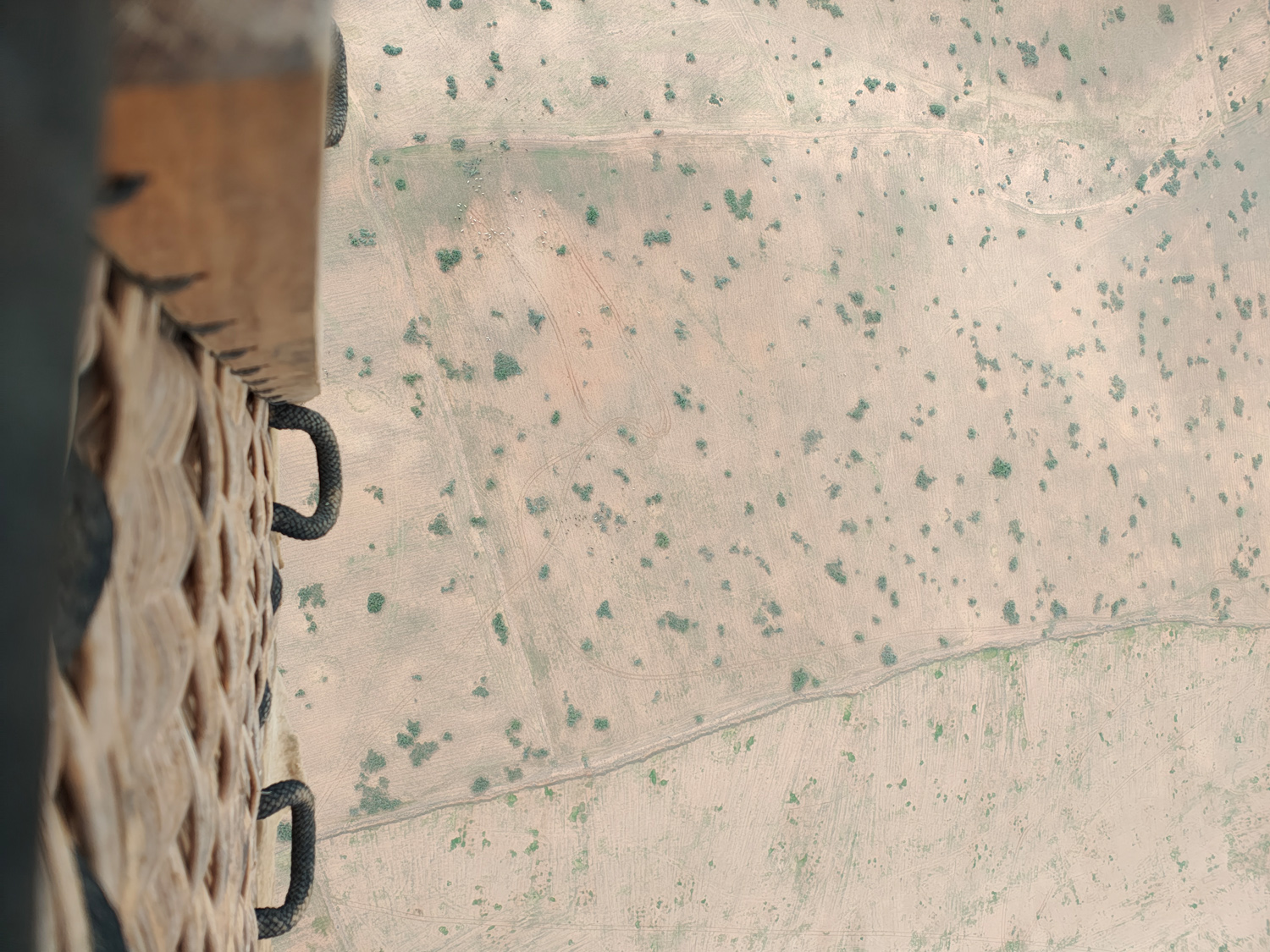
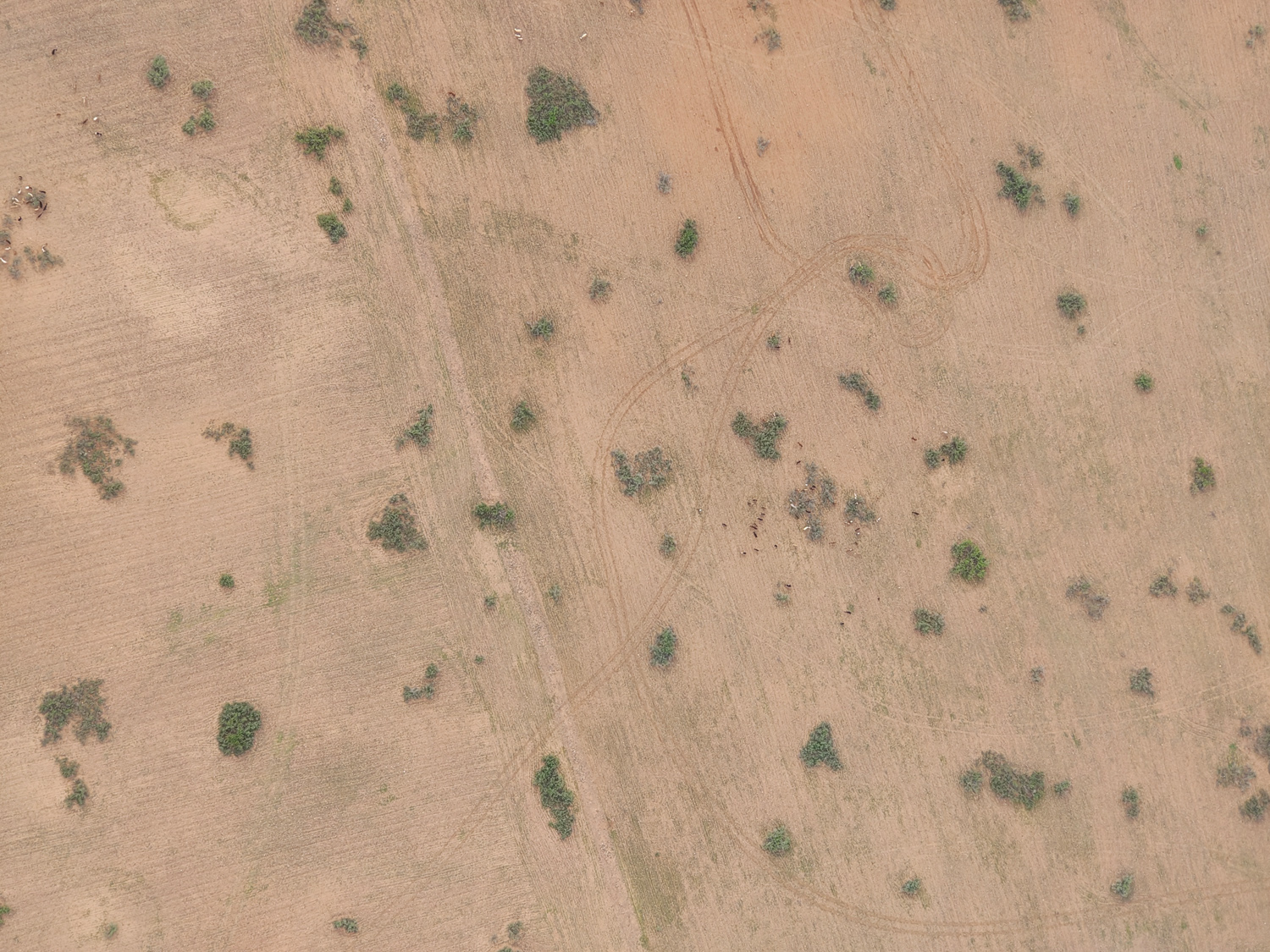

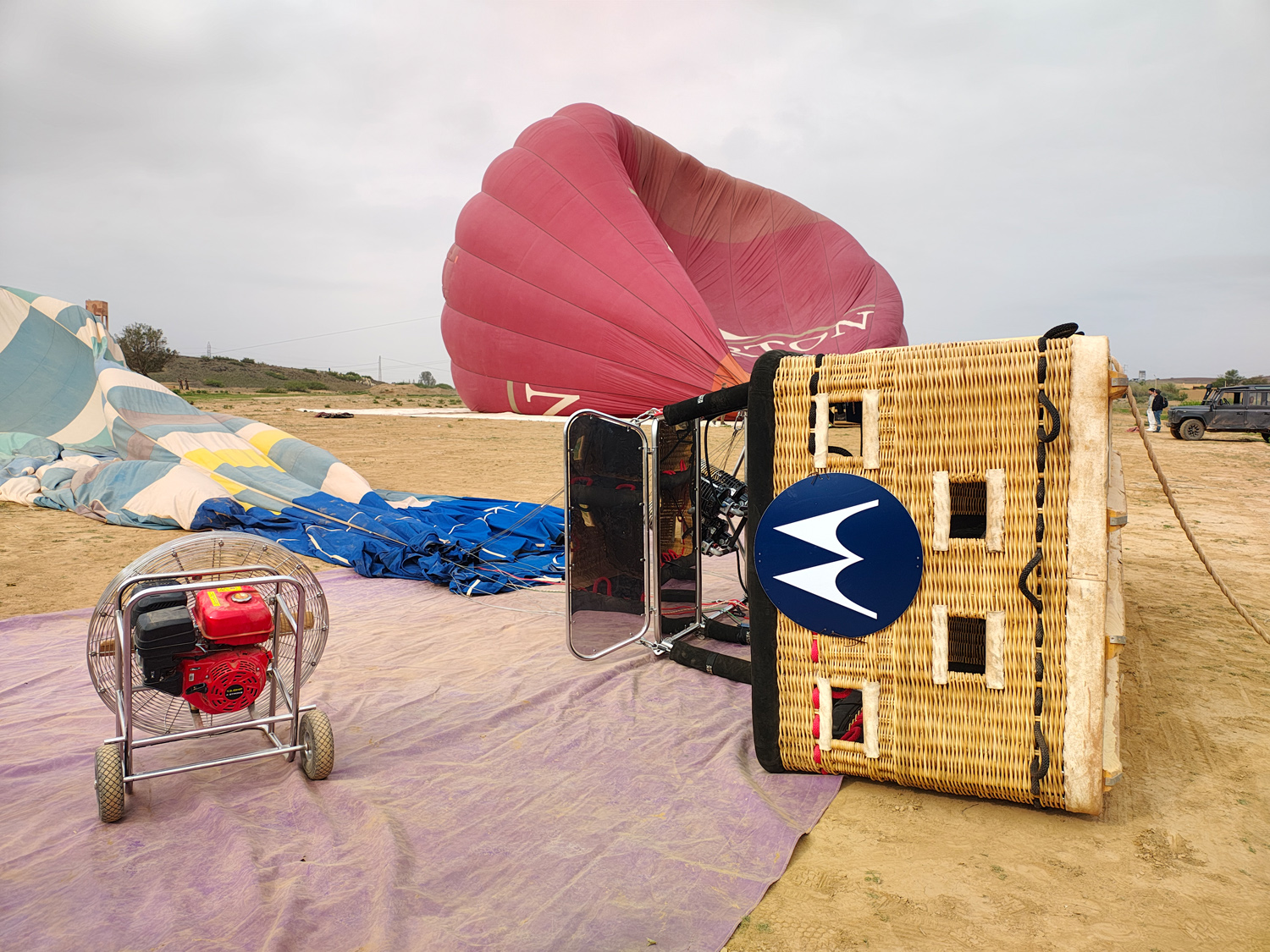
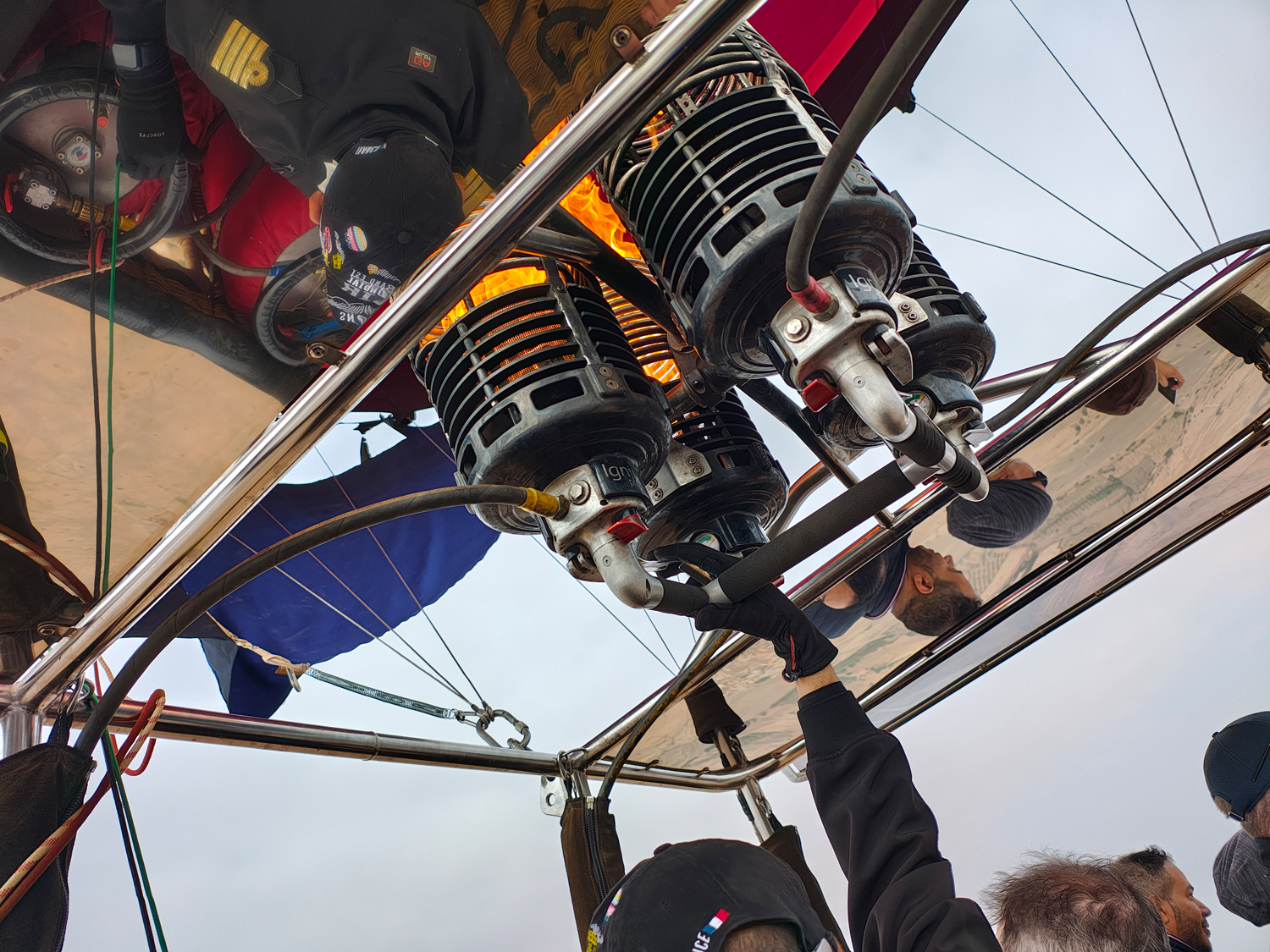
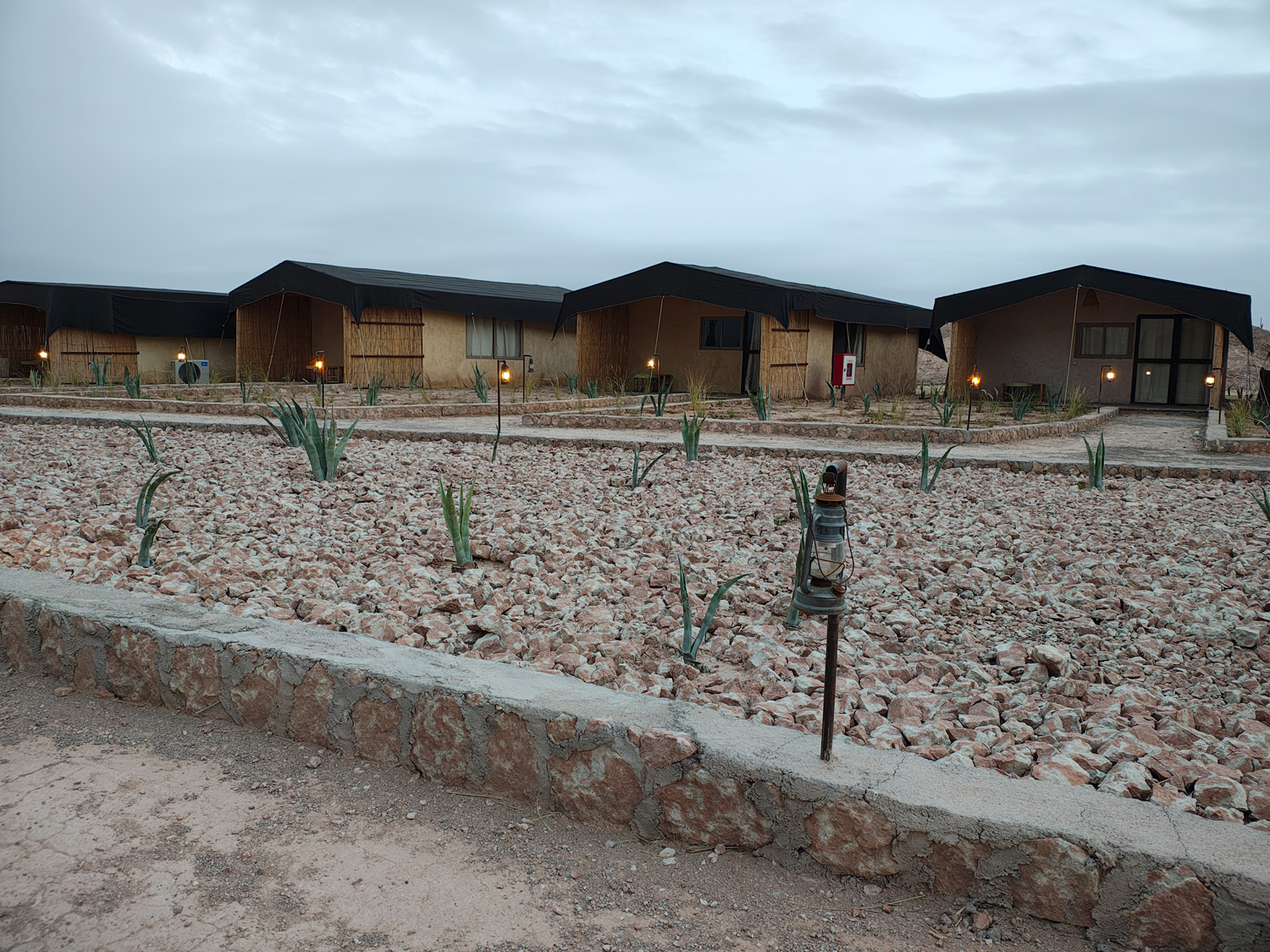


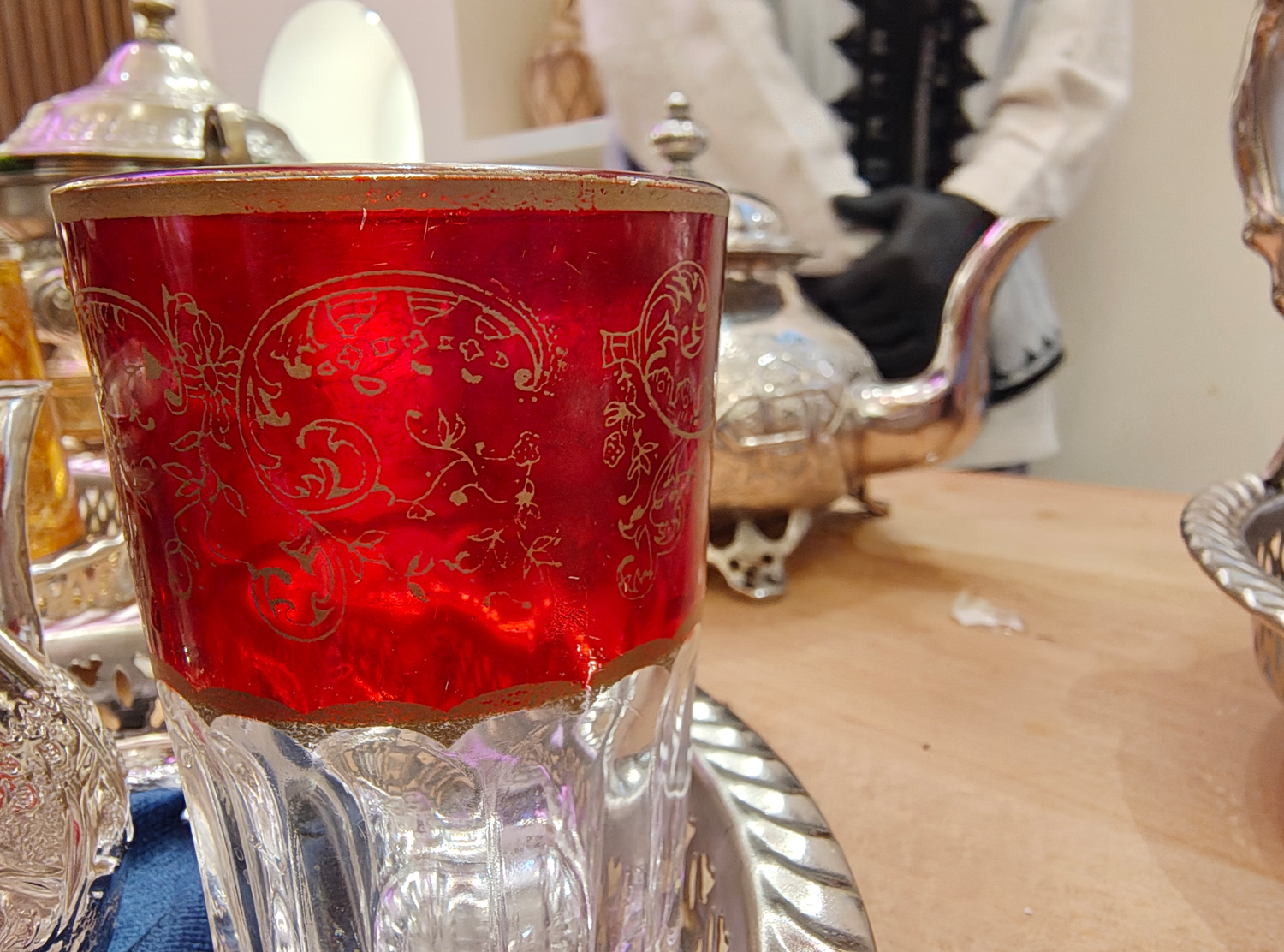

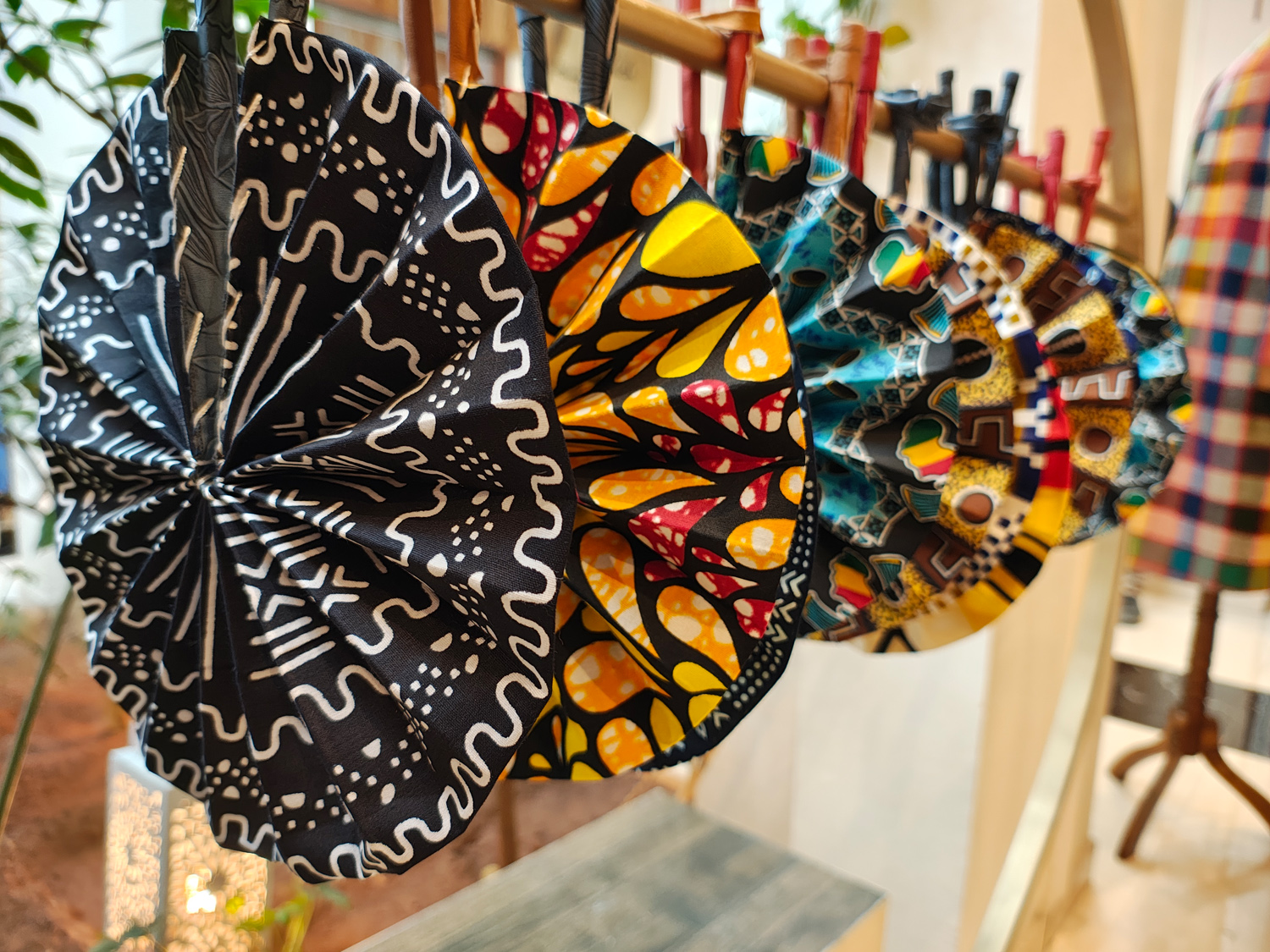







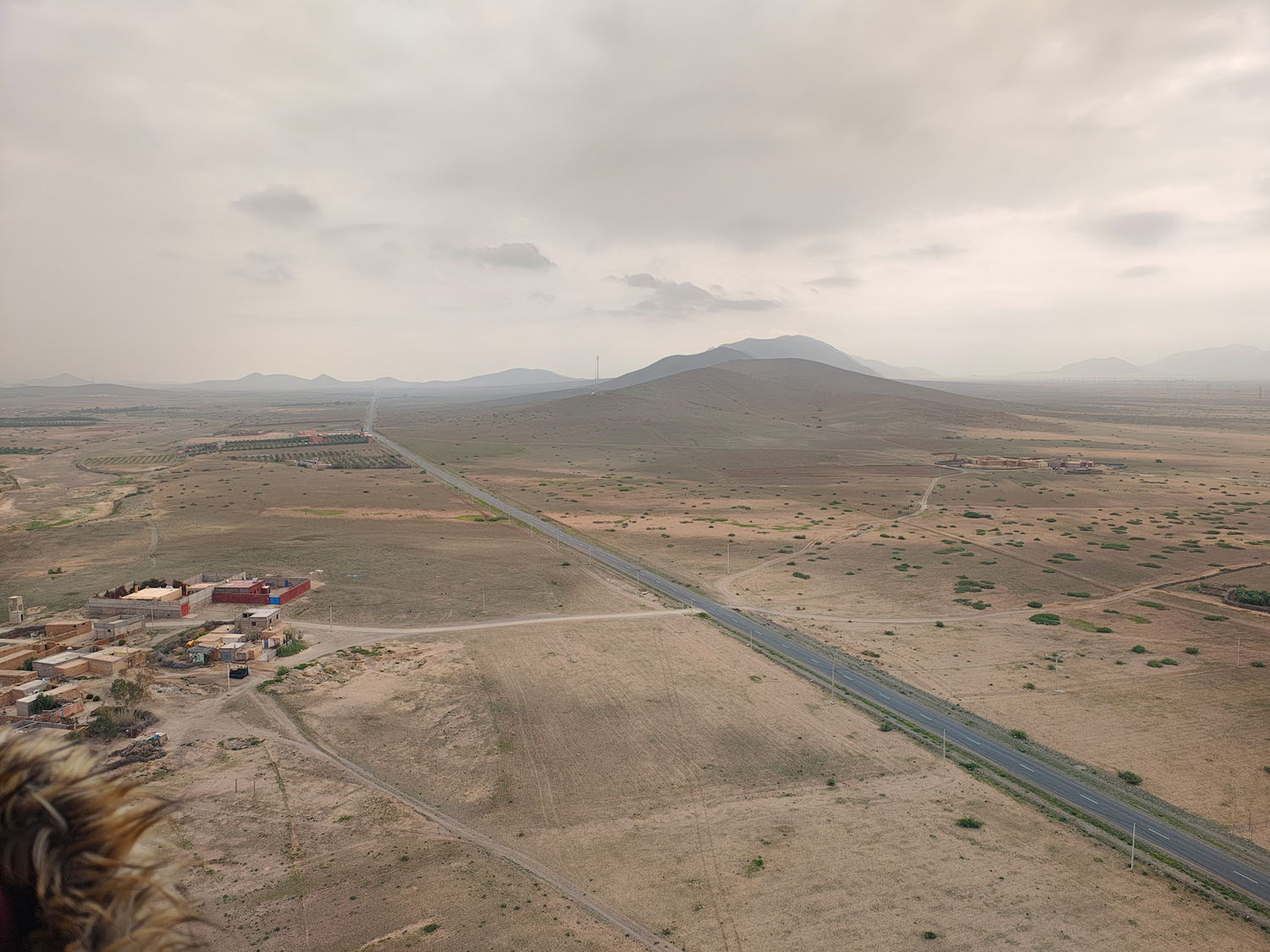

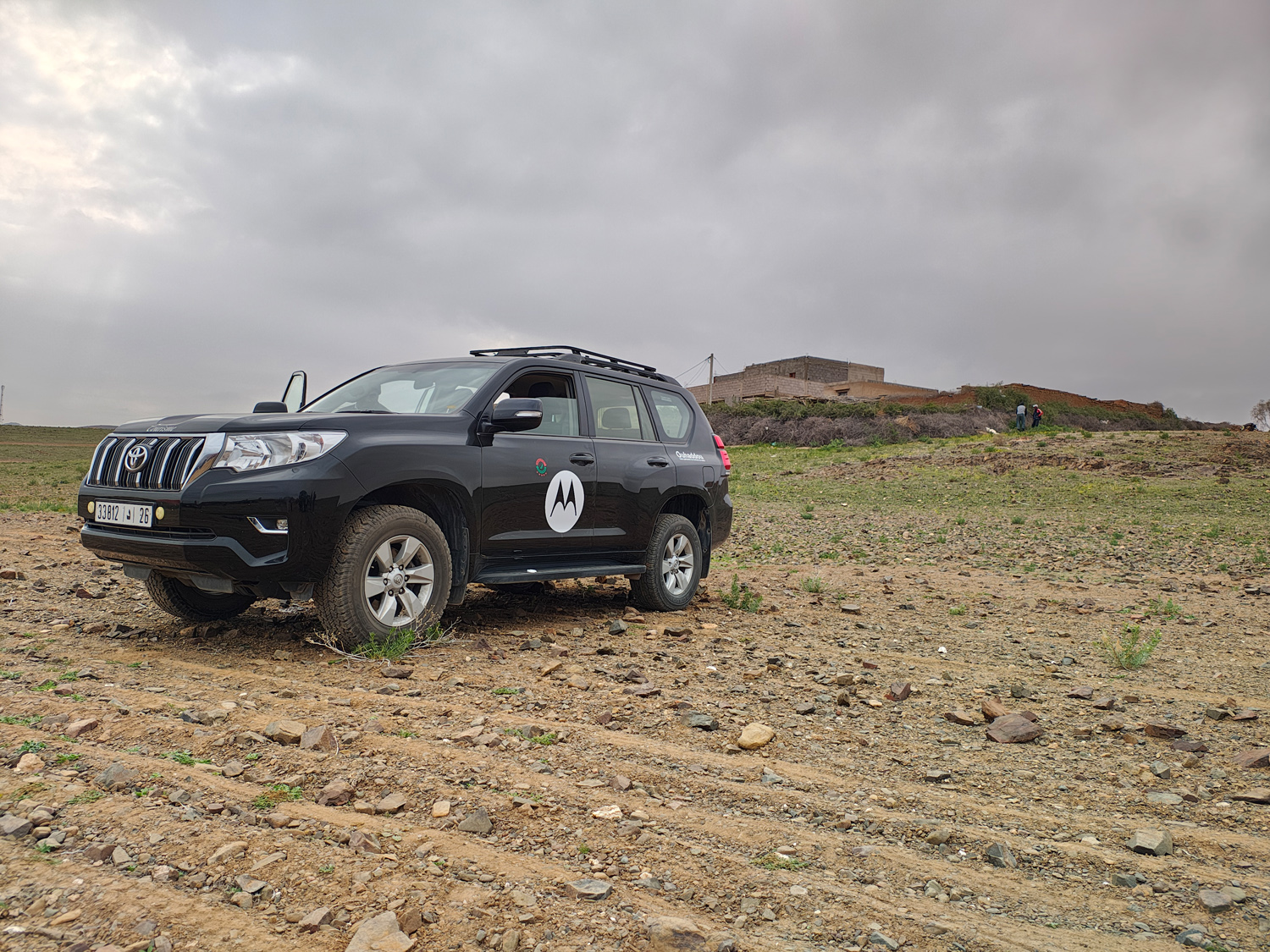
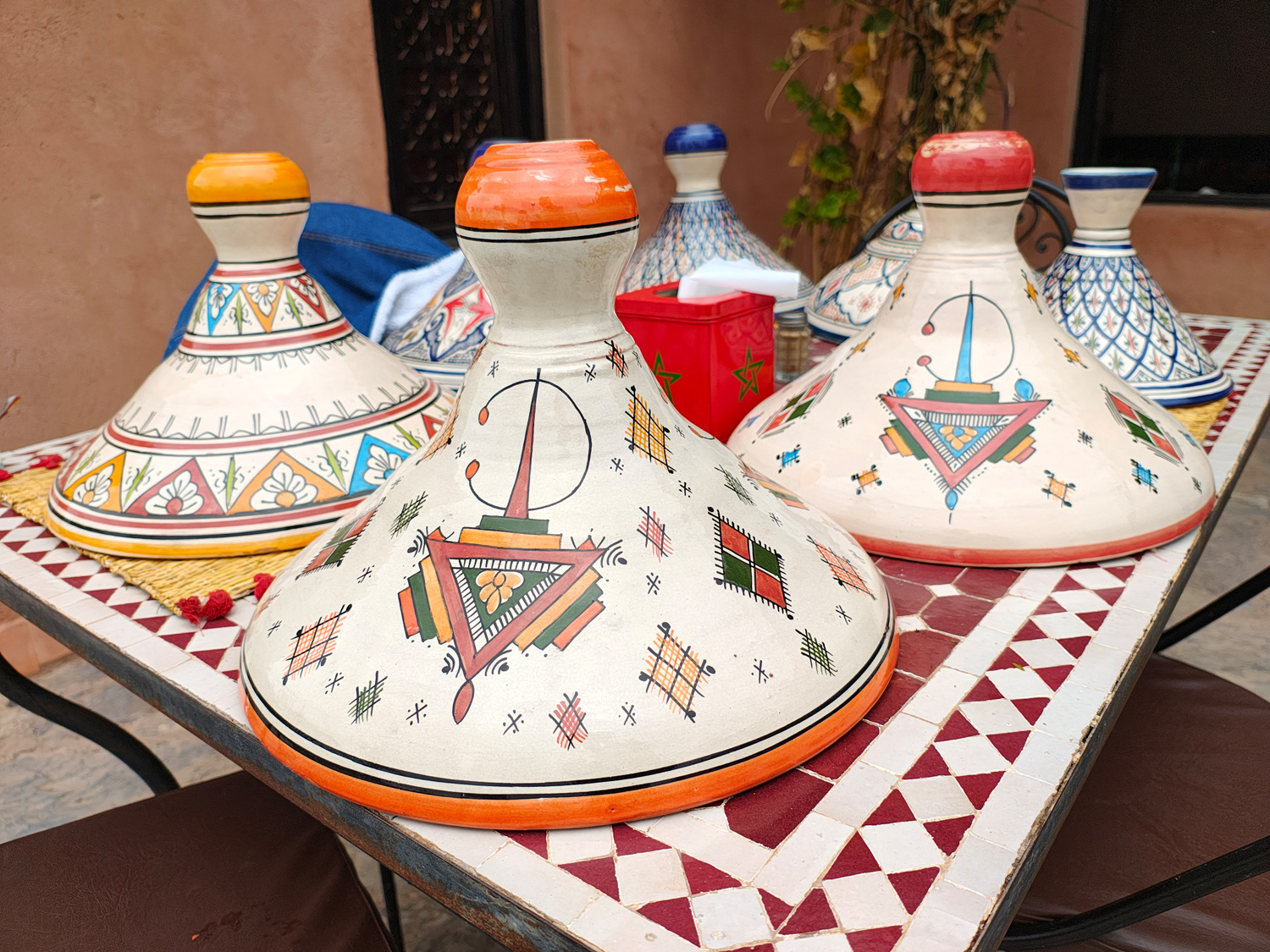
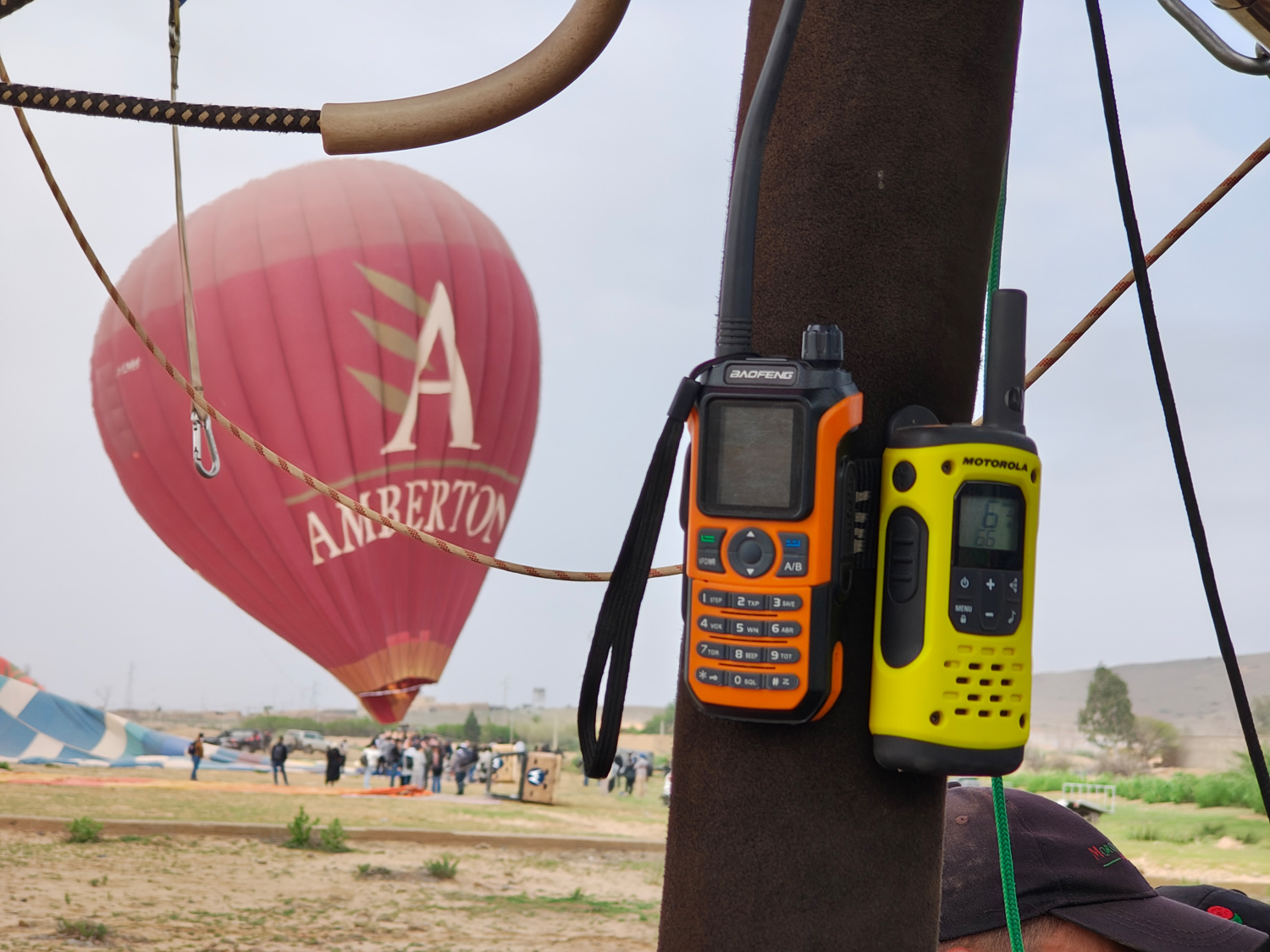
As with a lot of ultrawide cameras, the Edge 50 Pro’s isn’t always consistent with the main lens – particularly when presented with wide vistas and distant subjects. In some cases I actually preferred its moodier treatment, which added a bit of colour to an otherwise washed-out image – though it was less lifelike.
Macro snaps hold up very well under scrutiny, with plenty of detail and good sharpness at the extreme edges of the frame.
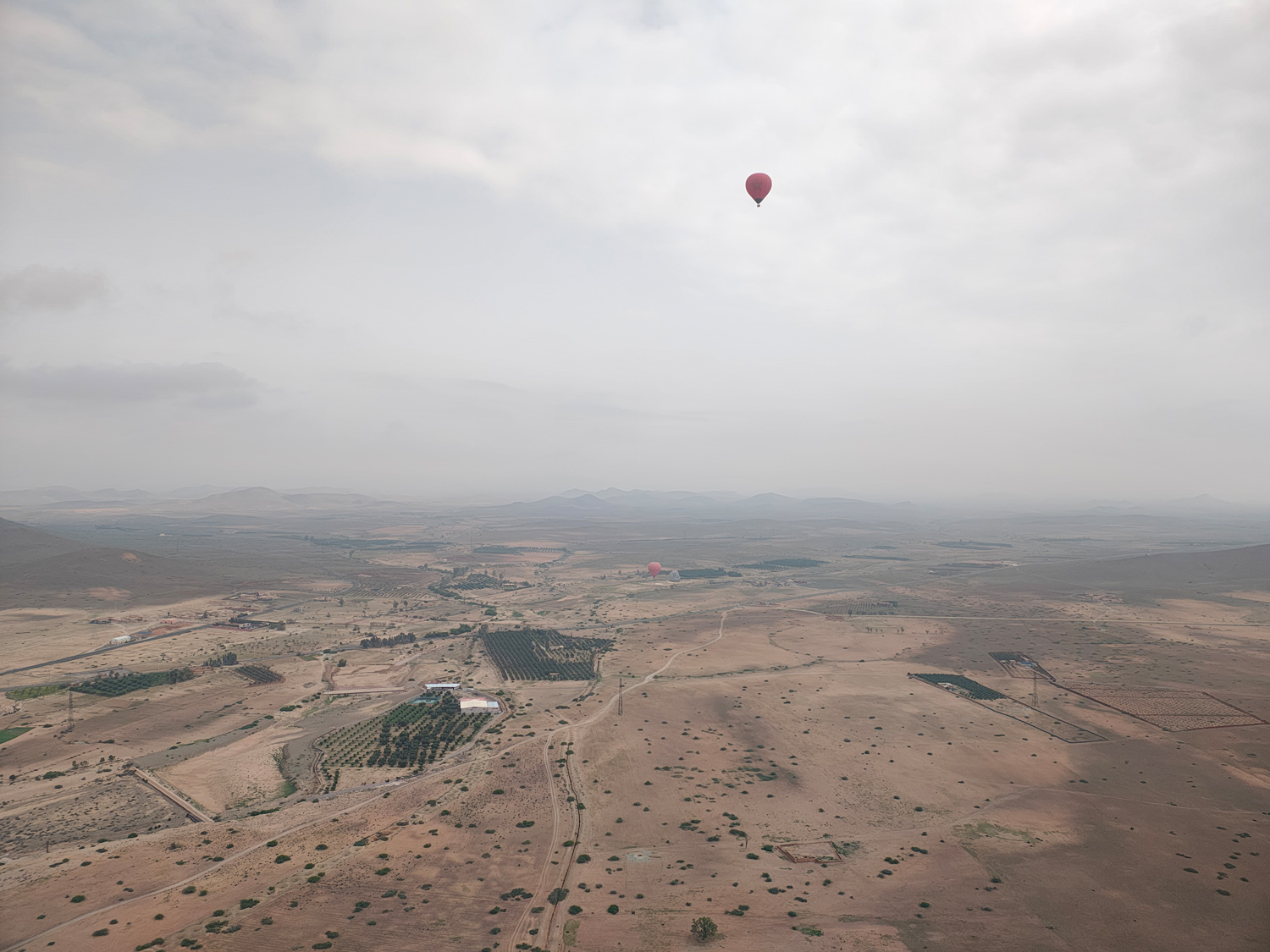
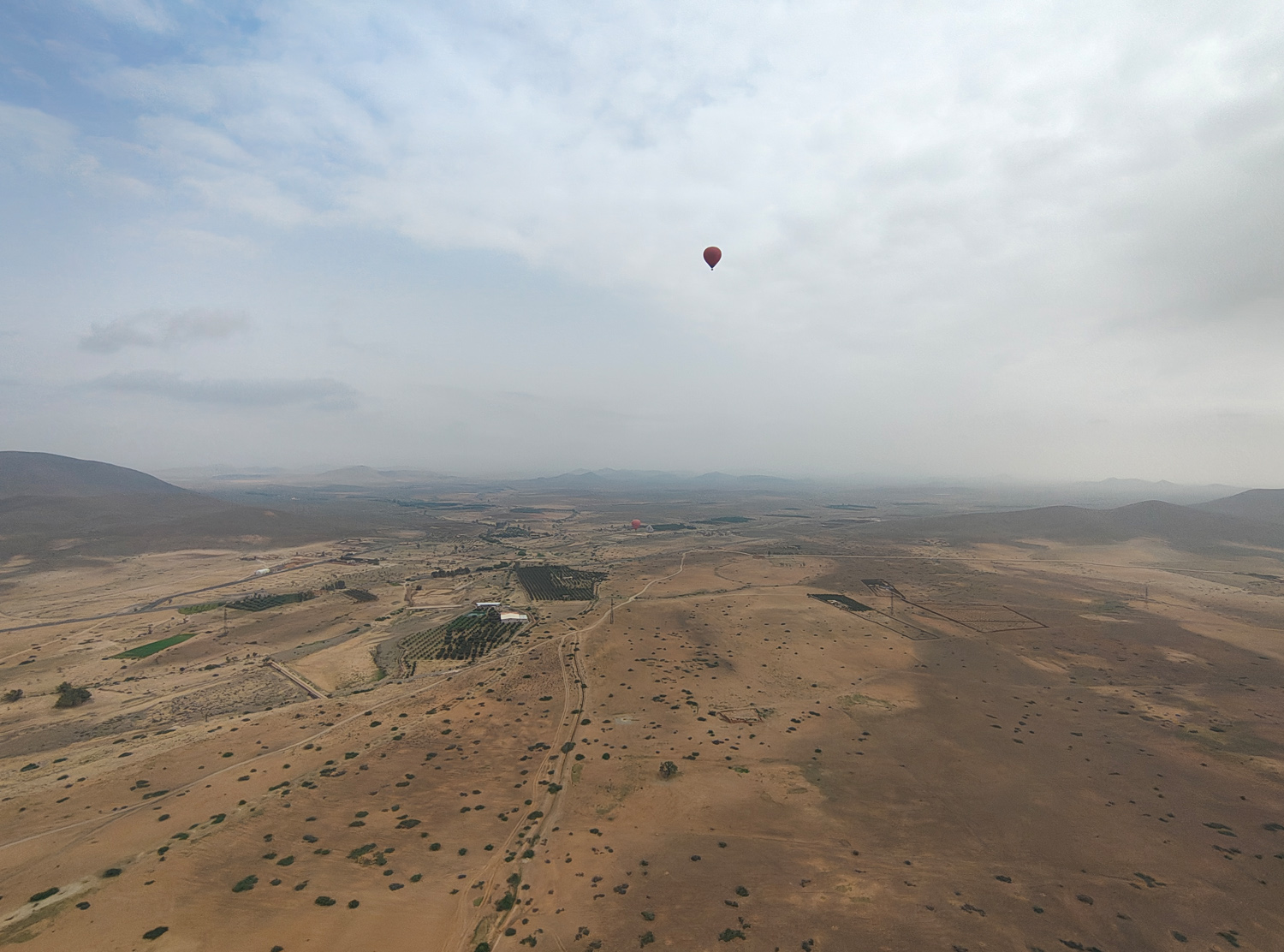
The 3x zoom was a much closer match to the main lens in terms of colour rendition and contrast. There’s plenty of detail on display, exposure was usually on point, and the natural depth of field makes it an excellent choice for impromptu portrait shots. 2x shots crop in on the main sensor, and aren’t quite as well-defined, with extra softness you won’t see from the dedicated lens.
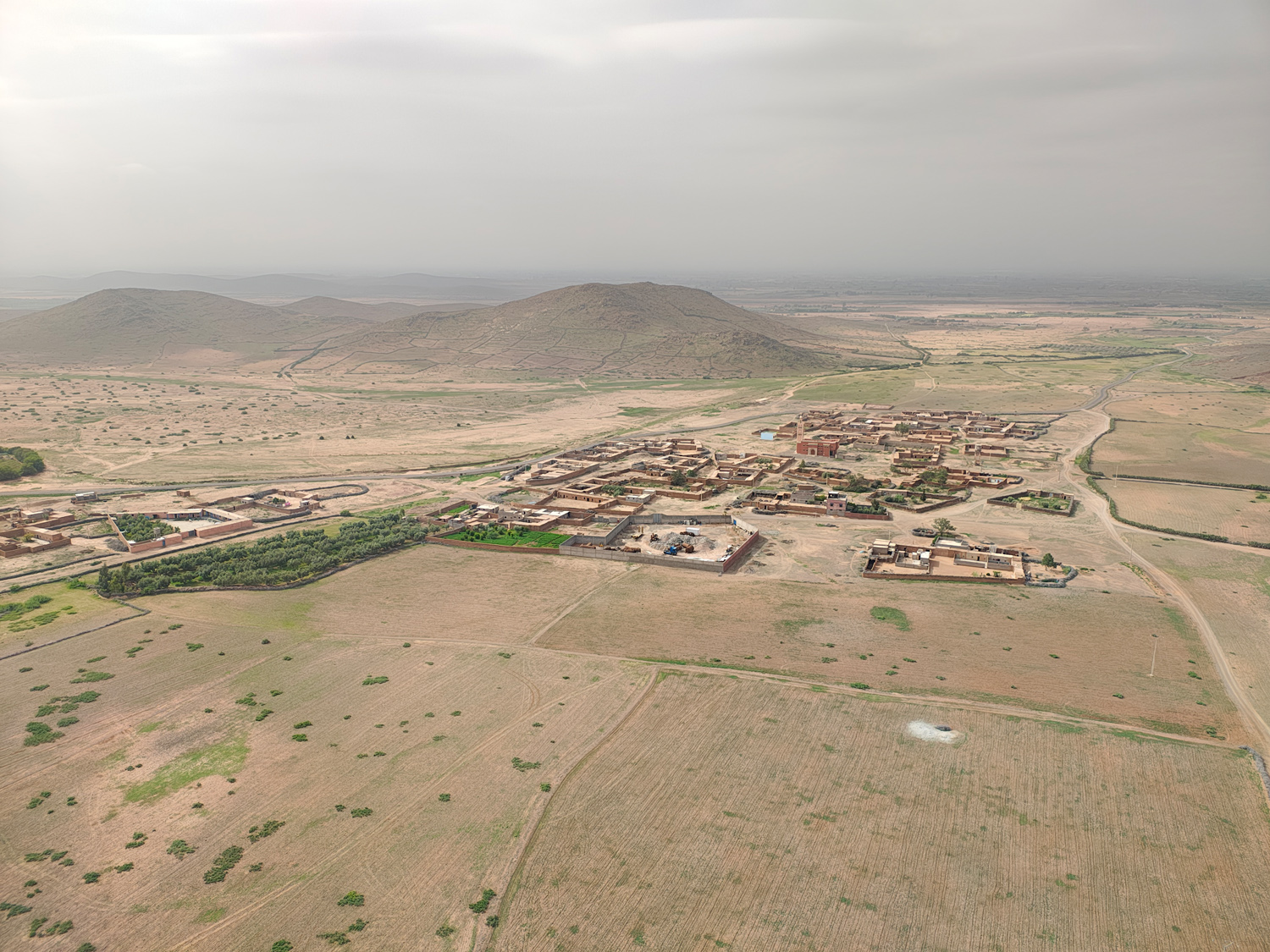
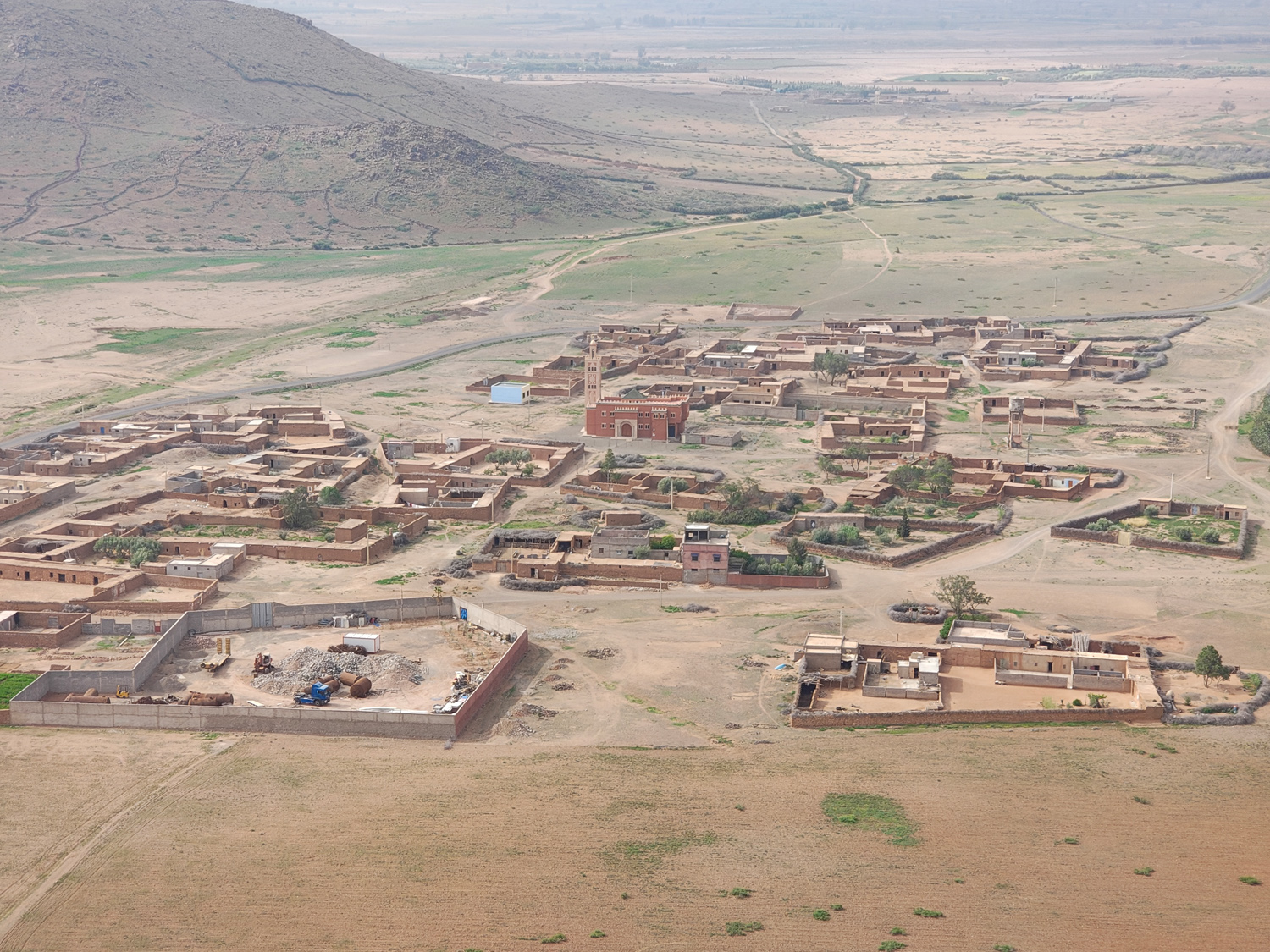
Motorola still has some catching up to do versus the class best when it comes to low-light performance. The lead lens can do a great job with static subjects, but the zoom shows considerably more noise. Both can struggle to keep moving subjects crisp, and the ultrawide is a step behind both.
Night Vision mode helps out a lot, although it takes a little more time per shot than the very best rivals.
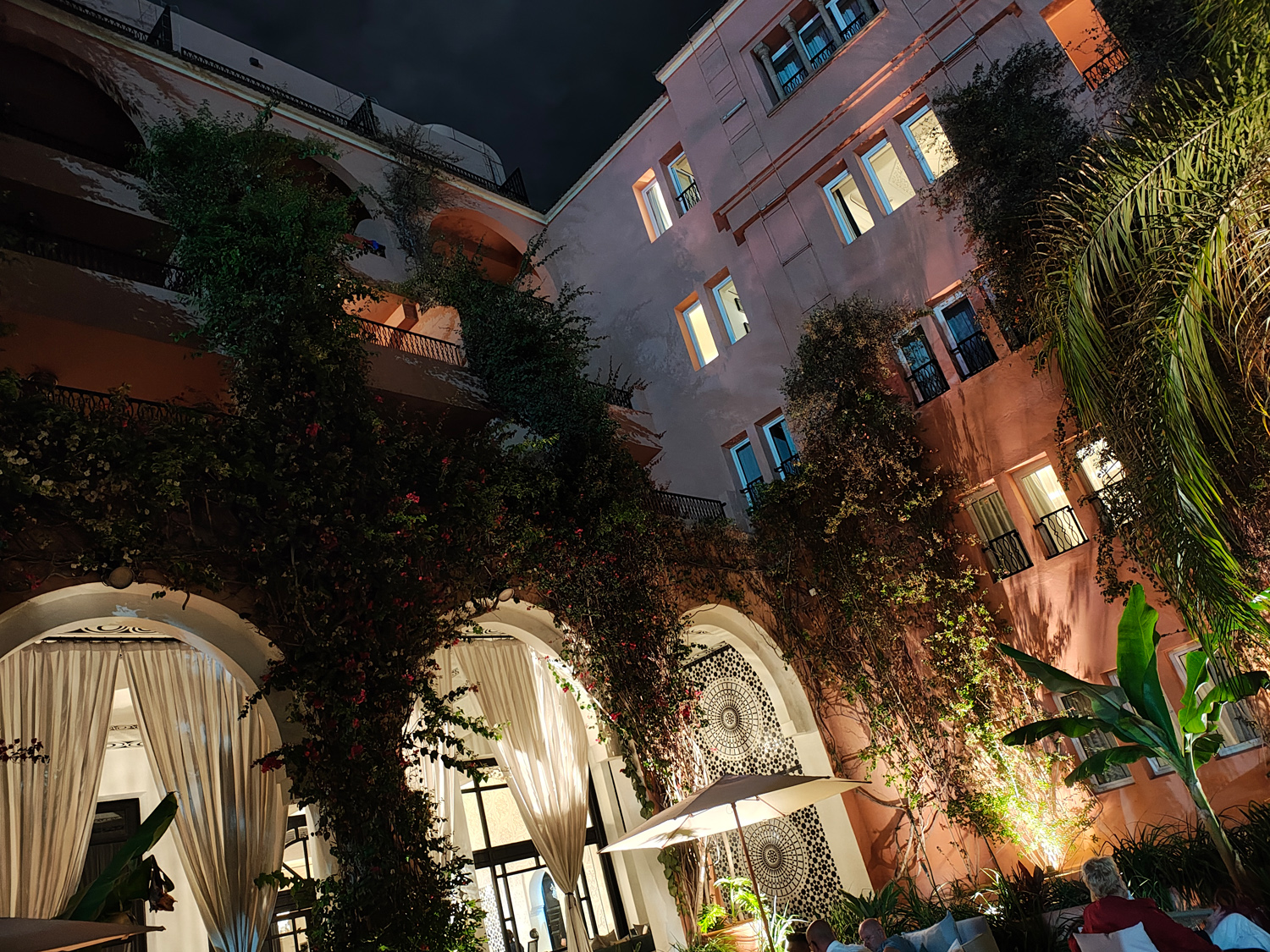



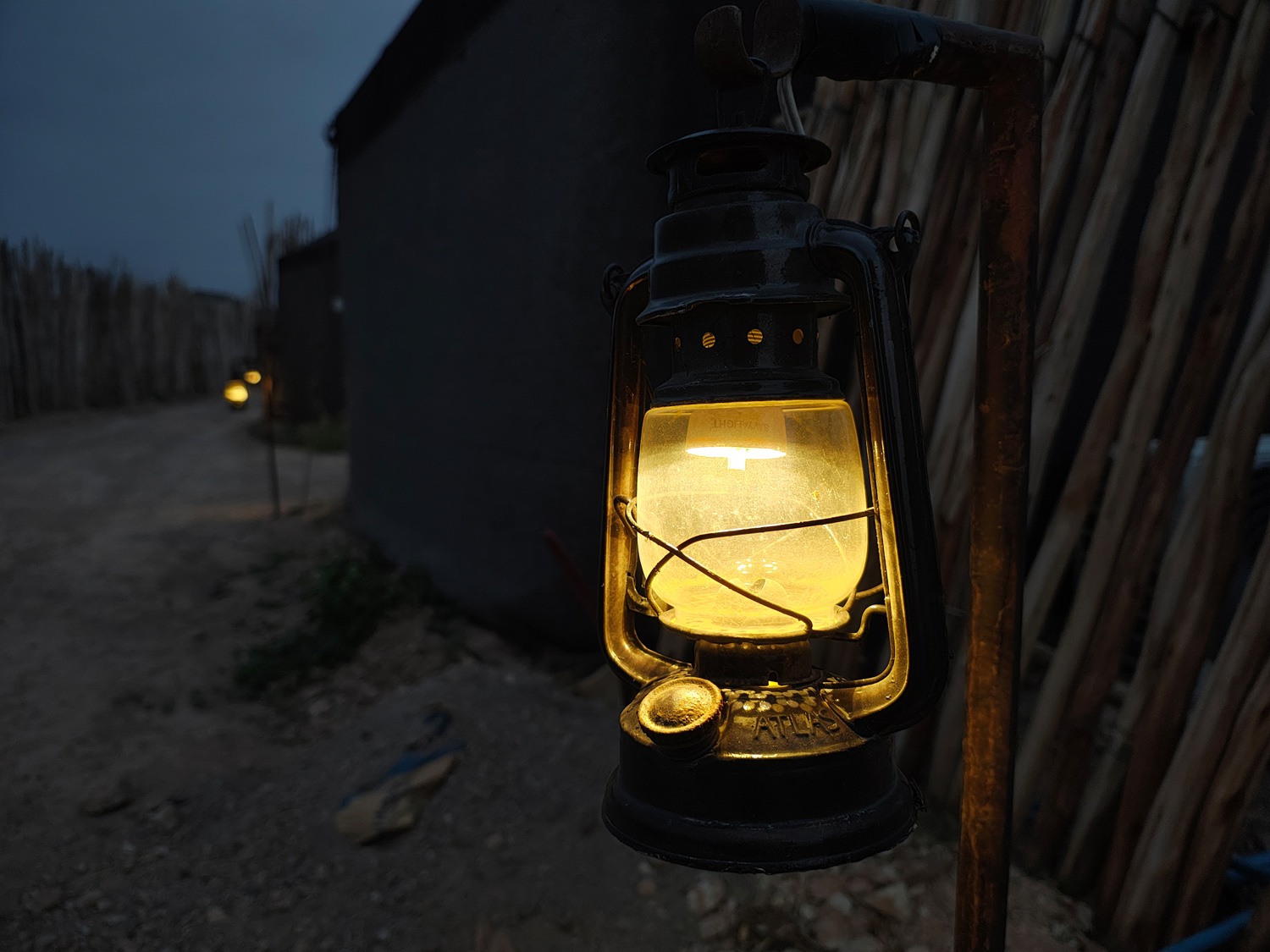
Speed in general was my biggest bugbear. The Edge 50 Pro’s camera app can take a couple of seconds to save a snap, leaving live view rather juddery while it processes the image. This is compounded in low light, giving me a few occasions where I missed the shot because it was still churning. The portrait mode was the worst offender, and I even spotted a few ghostly outlines of subjects that had moved after I pressed the shutter button.
It wasn’t enough to ruin the photography experience, but did prove frustrating when rivals don’t have these issues.
Software experience: hello again
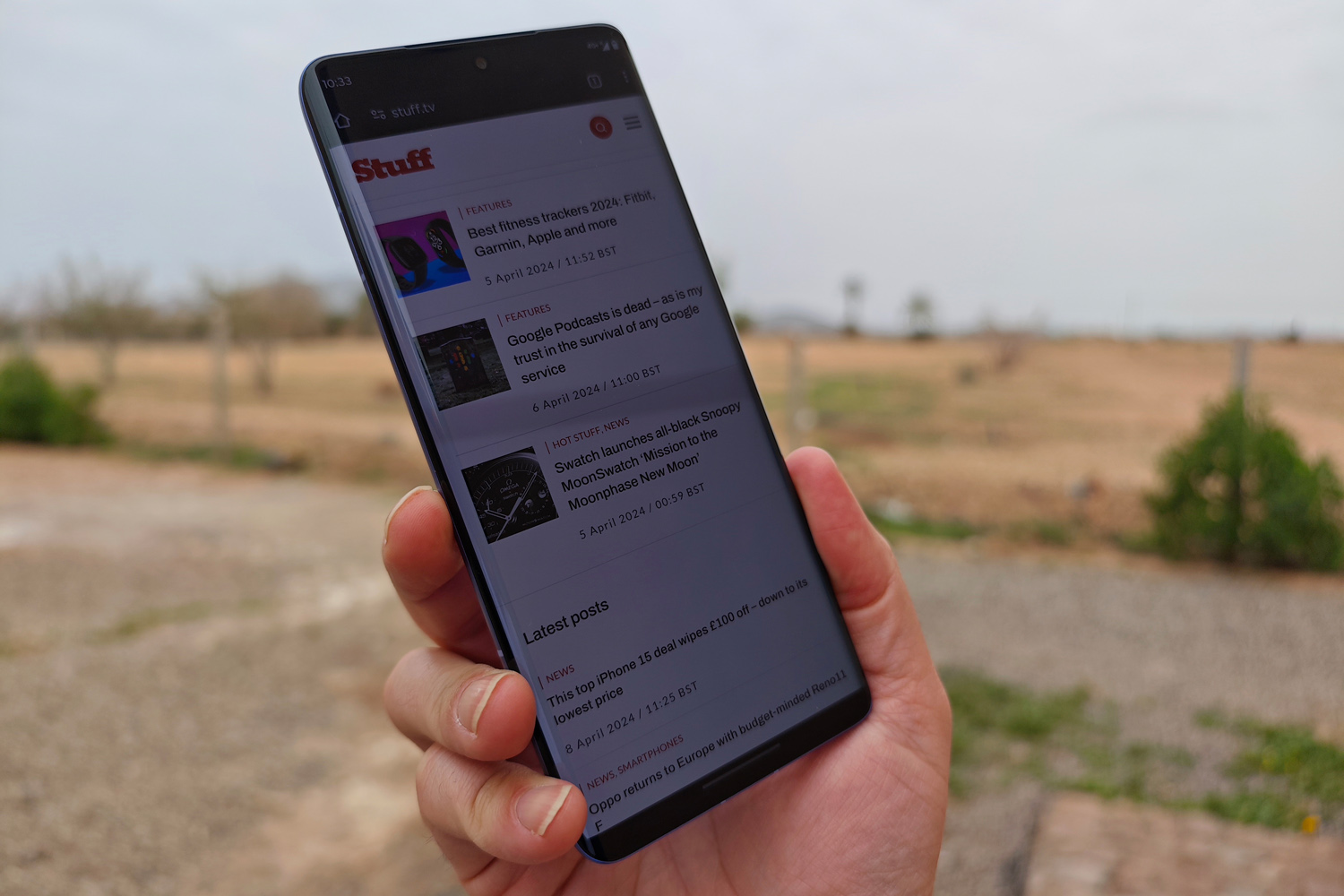
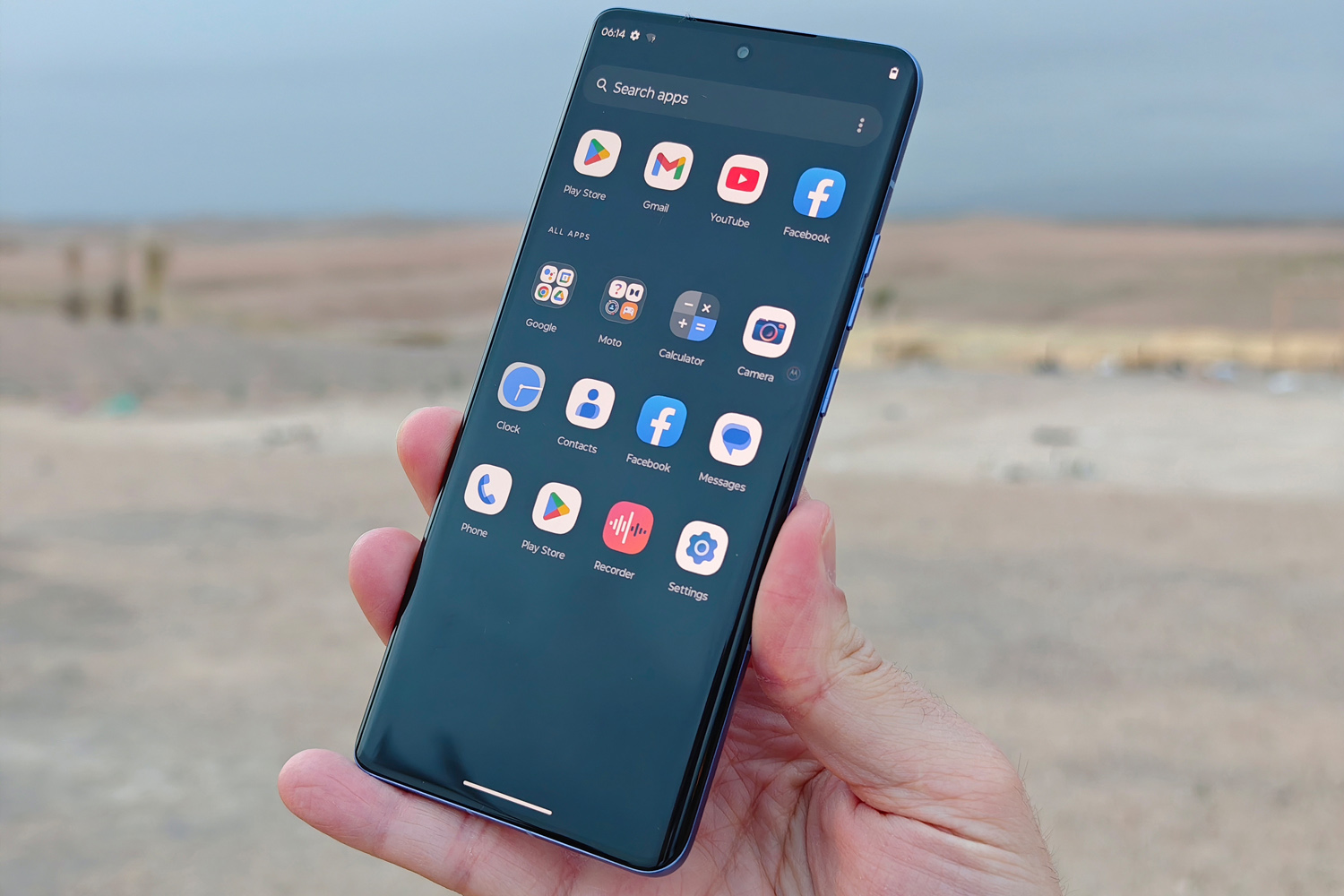
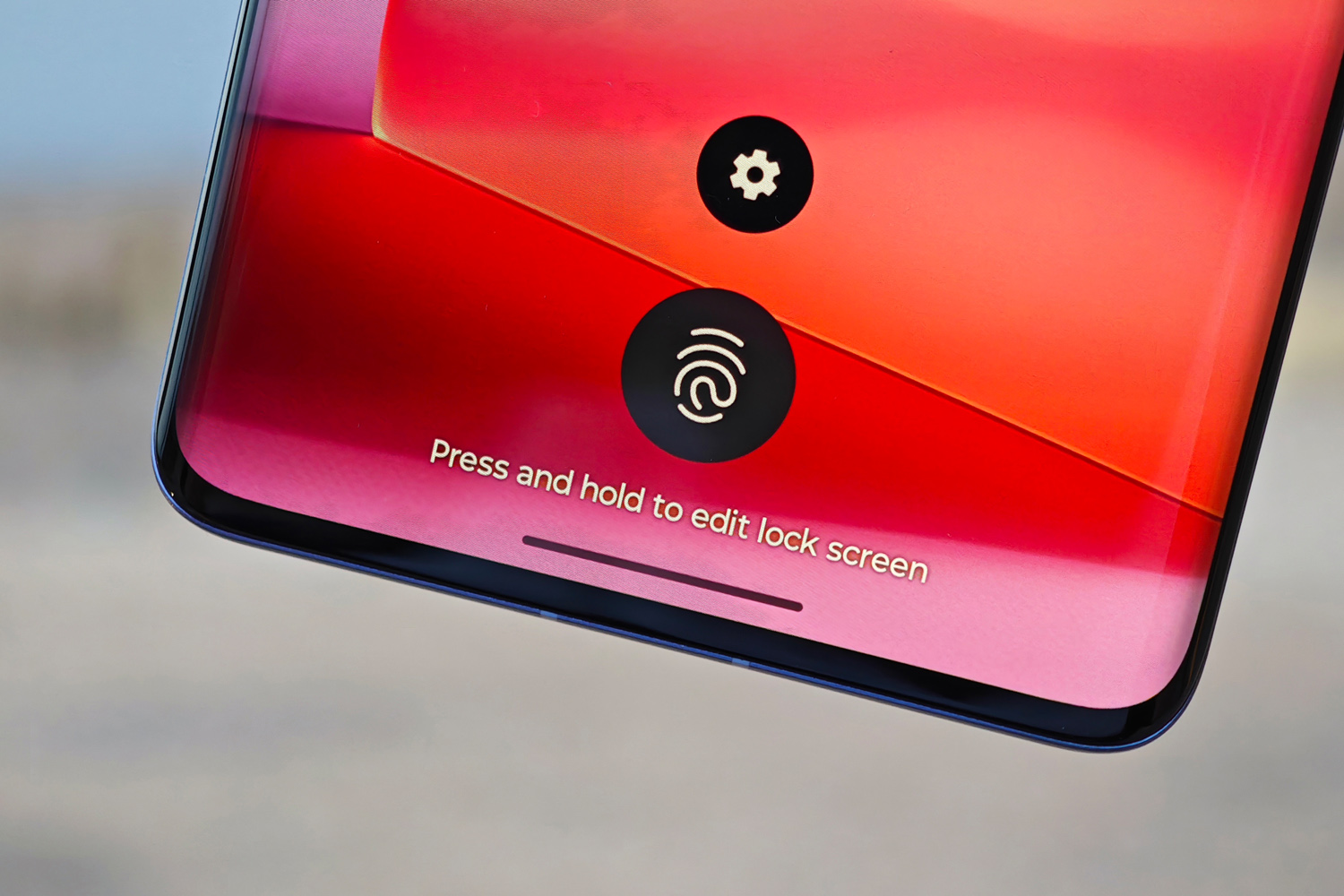
The Edge 50 Pro lands with Motorola’s new Hello UX interface, which is to my eyes is a mild refresh on the previous iteration. It largely sticks to a vanilla Android layout, with a few new fonts and icons, along with Motorola’s familiar additions including gesture shortcuts. Karate chopping your phone to use the camera flash as a torch never gets old.
Other highlights include Ready For and Moto Connect; the former lets you pair your phone with your PC to share messages and mobile data, while the latter lets you use an external display (wired or wireless) for big-screen video watching or gaming. Family Space is useful for anyone with young kids, letting you block access to certain apps before handing your device over.
These extras aren’t strewn across the homescreen or app drawer when you first set up the phone, so never feel overwhelming. I’m also a big fan of Moto’s no-nonsense approach to app bloat, with next to no third-party apps pre-installed and Google providing almost all of the defaults.
AI is on board, of course, but not to the extent that Samsung or Google have gone to. The Edge 50 Pro can use it to create custom wallpapers based on photos of patterns you take, in case you want to avoid your tech clashing with that day’s outfit. It takes a few seconds and doesn’t send your snaps to the cloud. Some of the patterns I tried were a bit abstract, but others were very easy on the eye.
Three years of Android version updates and four years of security patches isn’t all that impressive in 2024, with other mid-range phone makers promising more. It’s something to think about if you’re after a phone to keep for the long haul.
Performance & battery life: enter the dragon
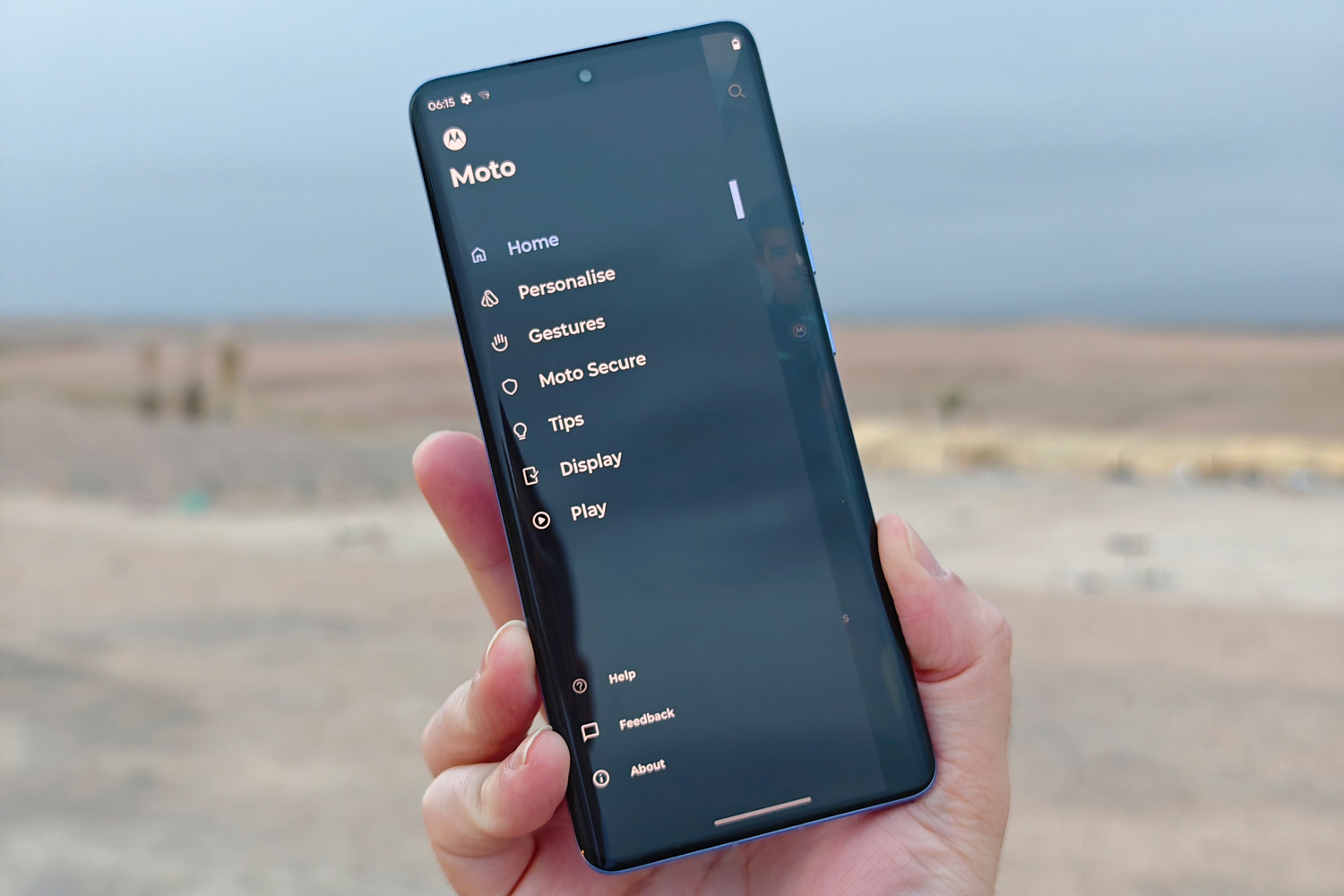
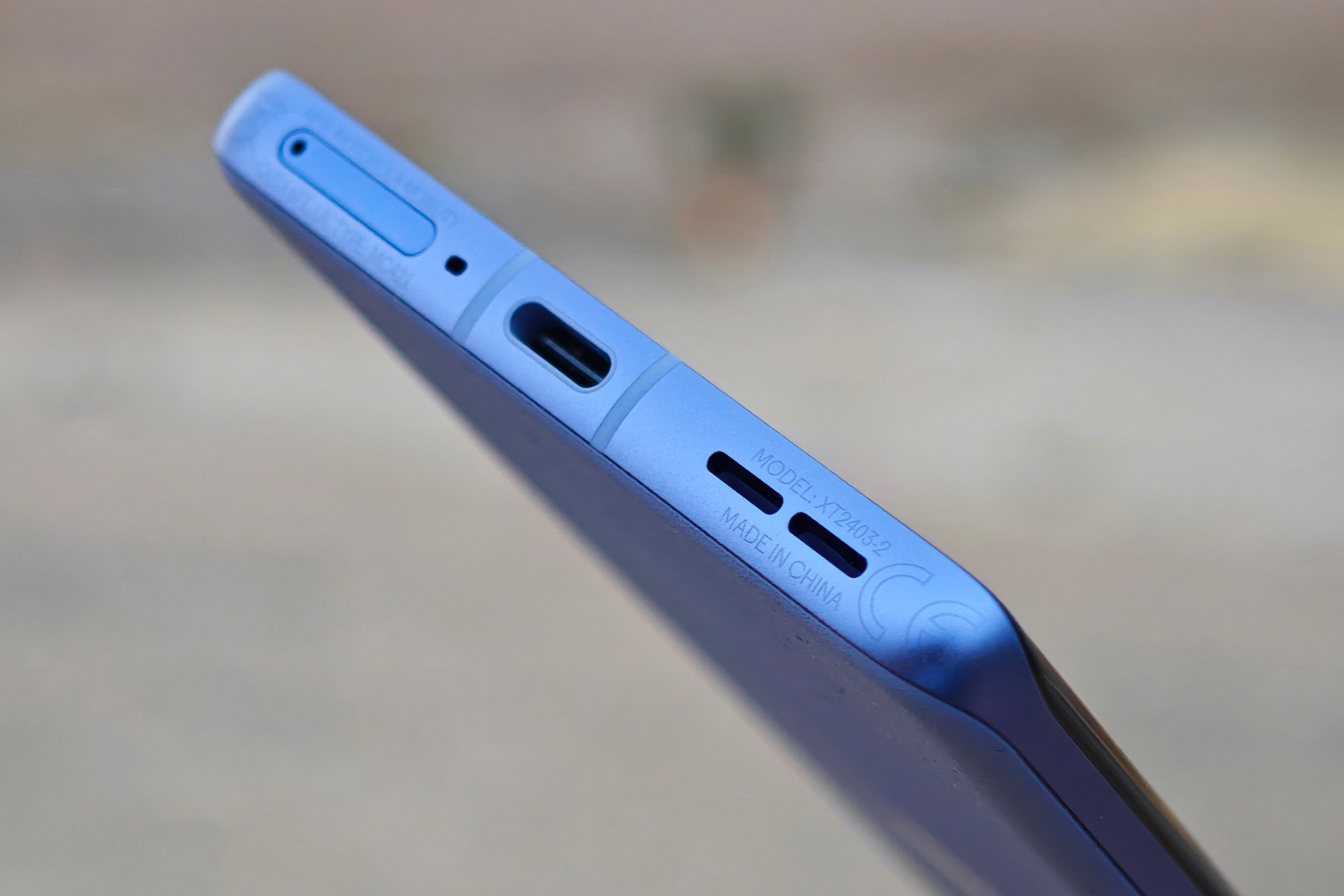
This isn’t the first phone I’ve seen with a Snapdragon 7 Gen 3 chipset running the show – but it is the first to be sold widely in Europe. The Vivo V30 stuck mainly to India and South East Asia, and cost considerably less than the Edge 50 Pro does. Here it’s paired with 12GB of RAM and a substantial 512GB of storage, which is a lot more than you’ll find on some rivals.
Qualcomm’s mid-tier silicon is perfectly capable of running Android smoothly. Apps opened at a quick pace and the UI always reacted to my taps and swipes with no delay. The generous amount of memory and optional RAM boost, which borrows some device storage for extra cache, mean multitasking holds up well too.
But the benchmarks don’t lie: this phone is outpaced by the Snapdragon 8 Gen 2 found in the OnePlus R, which only costs £50 more, by quite the margin. The Nothing Phone 2 and its Snapdragon 8+ Gen 1 also best the Moto in benchmark drag races. If you use demanding apps, or edit a lot of video, you’ll notice the difference.
That’s also true for gaming. While 3D games run at a decent lick, they largely default to lower detail settings. Call of Duty Warzone Mobile looked a little muddy when I first installed it, and while there was enough headroom to tick a few options boxes, there was no danger of approaching the phone’s maximum refresh rate. Genshin Impact felt choppy whenever a screen-filling attack animation would play, too.
Motorola has opted for a 4500mAh battery here, likely to keep the dimensions in check. That’s not huge, now that 5000mAh is readily available in rivals costing roughly the same, but the underlying hardware is efficient enough for it to last an entire day of typical use. By keeping my gaming time in check, I only dipped into the red towards the end of the evening. That was with a healthy mix of 4G data, camera use, social scrolling and Bluetooth music playback. If I’d have skipped an hour or so of YouTube viewing I’d have been happy to wait until the next morning to top up.
Charging speeds are where Motorola chalks up a big win. The 125W power brick bundled in the box can completely refuel the phone in less than half an hour, which is at least three times faster than anything Apple, Samsung or Google can manage. 50W wireless charging sounds fairly epic, too, although you’ll have to hunt around for a pad that can deliver that much juice – they’re not common.
Motorola Edge 50 Pro verdict
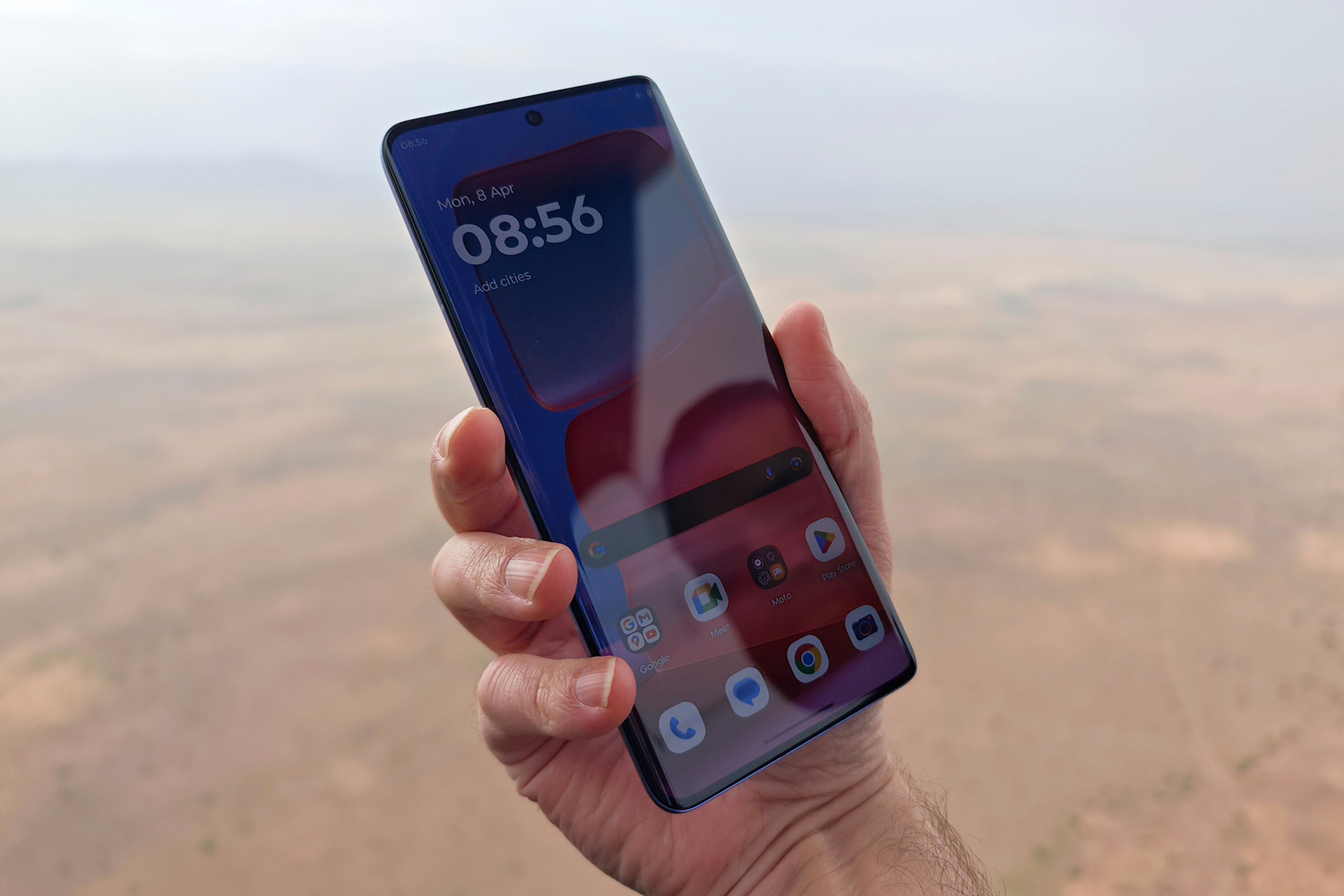
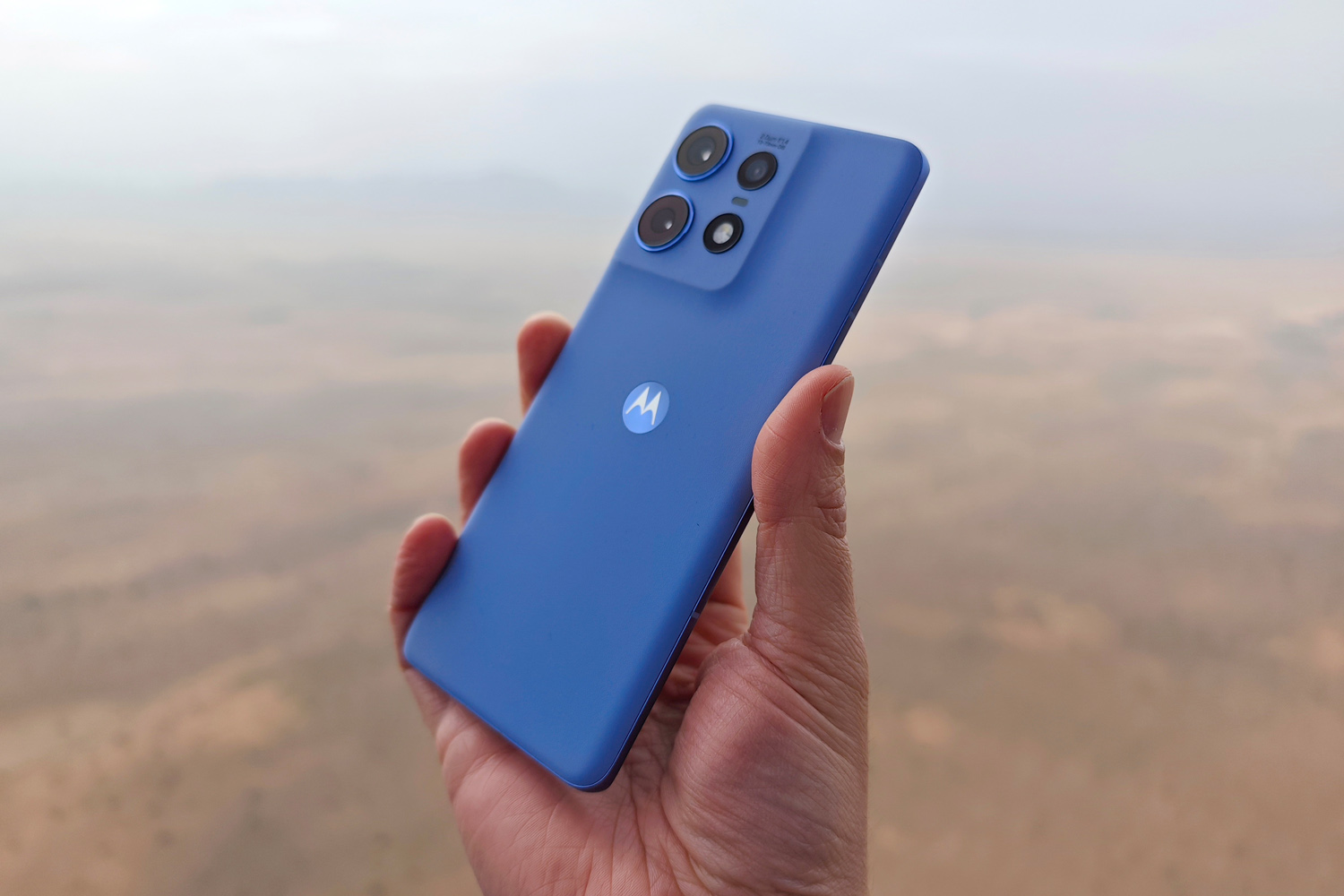
I’m a fan of the Motorola Edge 50 Pro’s sleek styling, eye-catching colour options, and how quickly it can gulp down power when plugged into a mains socket. But I don’t think it’s the flagship-baiter that the previous generation could claim to be. That’s not to say it’s lacking performance, or has particularly meagre battery life – more that rivals have superior silicon and larger capacity cells for the same sort of cash.
The Pantone partnership hasn’t delivered cameras that significantly outsnap the competition, either. Image quality is decent rather than spectacular, and the app is particularly sluggish. Phone photographers only need to spend a little more to get a better shooting experience.
If you’re sold on the looks, there’s nothing here I’d consider a dealbreaker – though the abundance of well-rounded rivals at the £599/€699 mark means it doesn’t quite earn that Pro moniker. I fully expect it’ll prove more successful in other territories, where pricing is much keener.
Stuff Says…
A pretty and proficient mid-ranger, with rapid charging and a decent lead camera. But rivals have more personality – and better secondary snappers.
Pros
Suave styling in eyecatching colours
Super-quick wired and wireless charging
Curved-edge OLED display is delightful
Cons
Image processing a step behind the best
Camera app can be sluggish at times
There are faster performers at this price
Motorola Edge 50 Pro technical specifications
| Screen | 6.7in, 2712×1220 pOLED w/ 144Hz, HDR10+ |
| CPU | Qualcomm Snapdragon 7 Gen 3 |
| Memory | 8/12GB RAM |
| Cameras | 50MP, f/1.4 w/ OIS, laser AF, PDAF + 10MP, f/2.0 telephoto w/ 3x optical zoom, PDAF + 13MP, f/2.2 ultrawide w/ autofocus rear 50MP, f/1.9 front w/ autofocus |
| Storage | 128/256/512GB on-board |
| Operating system | Android 14 |
| Battery | 4500mAh w/ 125W wired, 50W wireless charging |
| Dimensions | 162x72x8.2mm, 186g |

